
Nestled in the heart of Šumadija region, Kragujevac is Serbia’s fourth largest city and its first modern-day capital before losing this title to Belgrade. Historically, the city played a major role in shaping the current Serbian identity, as Kragujevac was both a crossroad and the battleground of several regional empires, subsequently prompting a national renaissance among its dwellers, resulting in political freedom and independence. I’ve spent one day exploring this remarkable city, appreciating its past while enjoying its present.
Dominated by a vibrant city center, Kragujevac has a hodgepodge of Viennese, Balkan and Brutalist architecture, all merging into a single urban entity that rewards its visitors with plenty of monuments and edifices to awe at. The architectural mosaic is somewhat complemented by a network of parks and green spaces, most notably Bubanj Lake and the Upper Park, serving as a great spot of afternoon picnic or a coffee break.
The Upper Park, or Veliki Park as it’s locally known, slightly west of the city center, is a pleasant patch of mostly grove used by locals as a pedestrian highway on their way to different parts of the city. Additionally, the park is next to a sport complex featuring basketball, tennis, volleyball and soccer courts, forming a large and seamless recreational area.
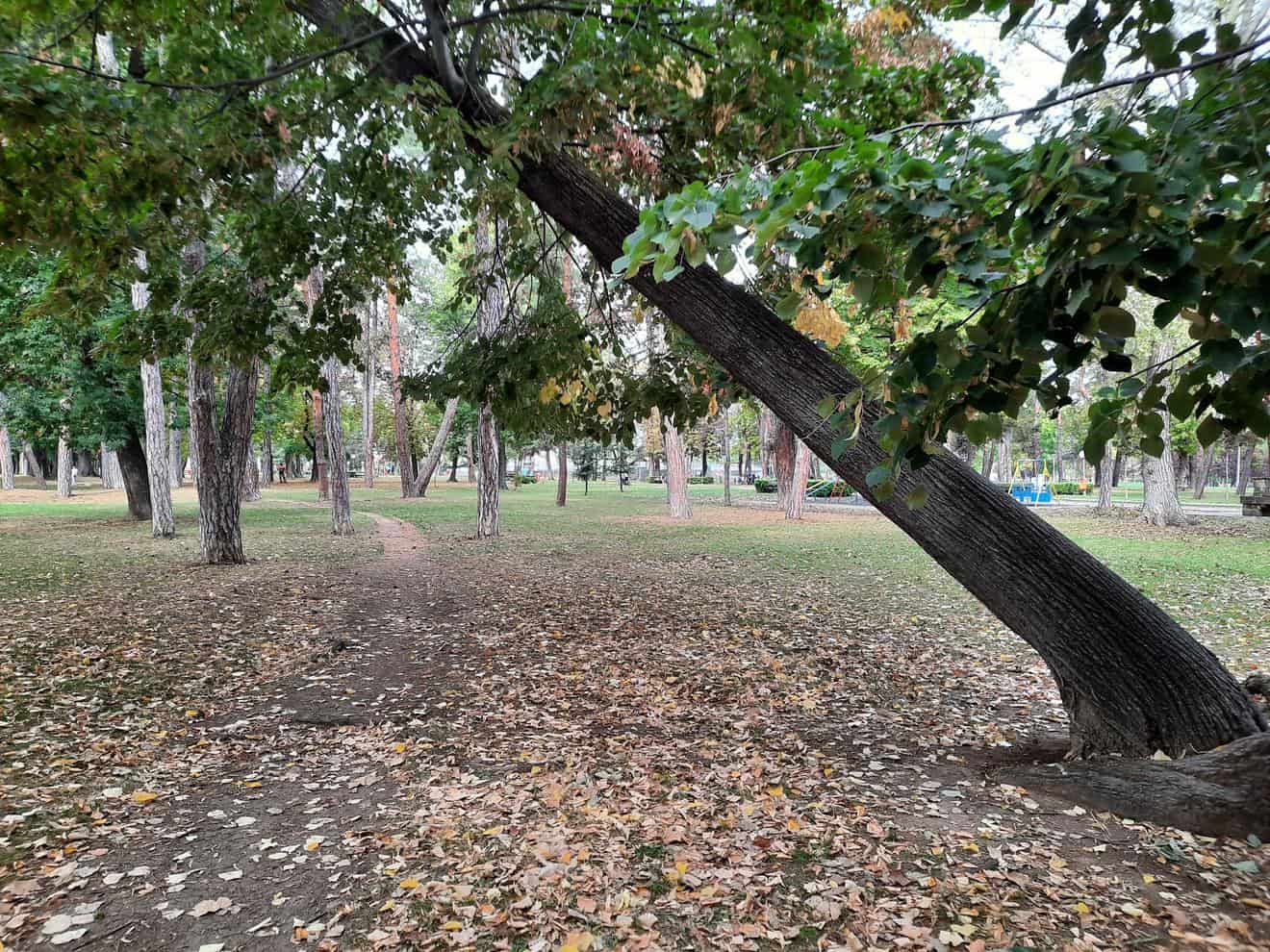
photography by: Omri Westmark
The park is traversed by a wide avenue culminating at a circular fountain brimming with coins thrown by good-luck seekers. Following the park’s 110th anniversary, it was face lifted with brand new infrastructure, enhancing its already charming vibe.
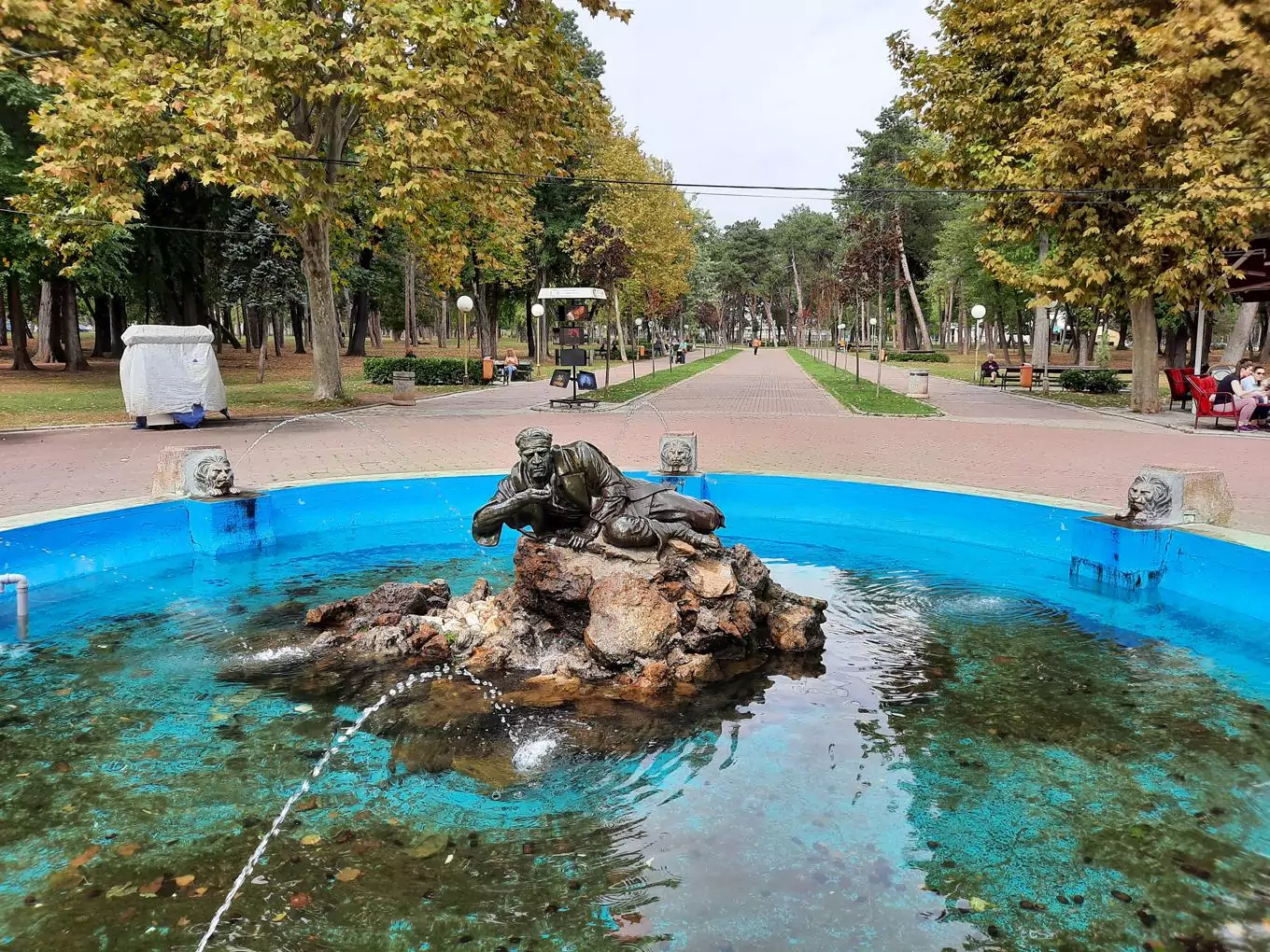
photography by: Omri Westmark
The Orthodox cathedral of Kragujevac, named after the holy mother of god.

photography by: Omri Westmark
Designed by the architect Andreja Andrejevic who studied in Russia, the church was greatly inspired by the Russian-Byzantine style, in stark contrast to the growing influence of Catholic-Baroque morphology at the time of its construction.
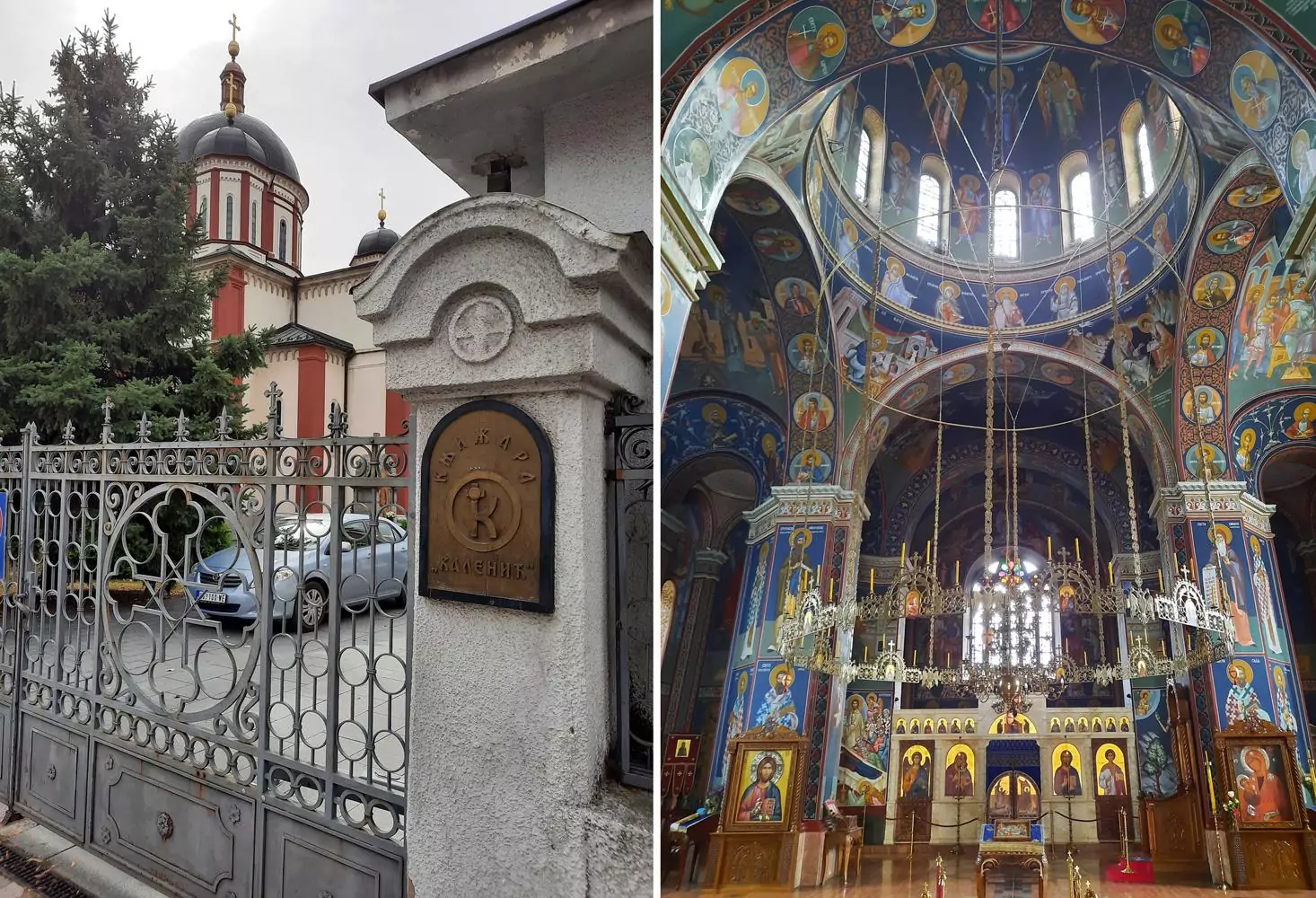
photography by: Omri Westmark
The small reddish and white chapel in front of the church is frequently visited by passersby who light candles and pray, while a strong odor of wax is wafting through the air.
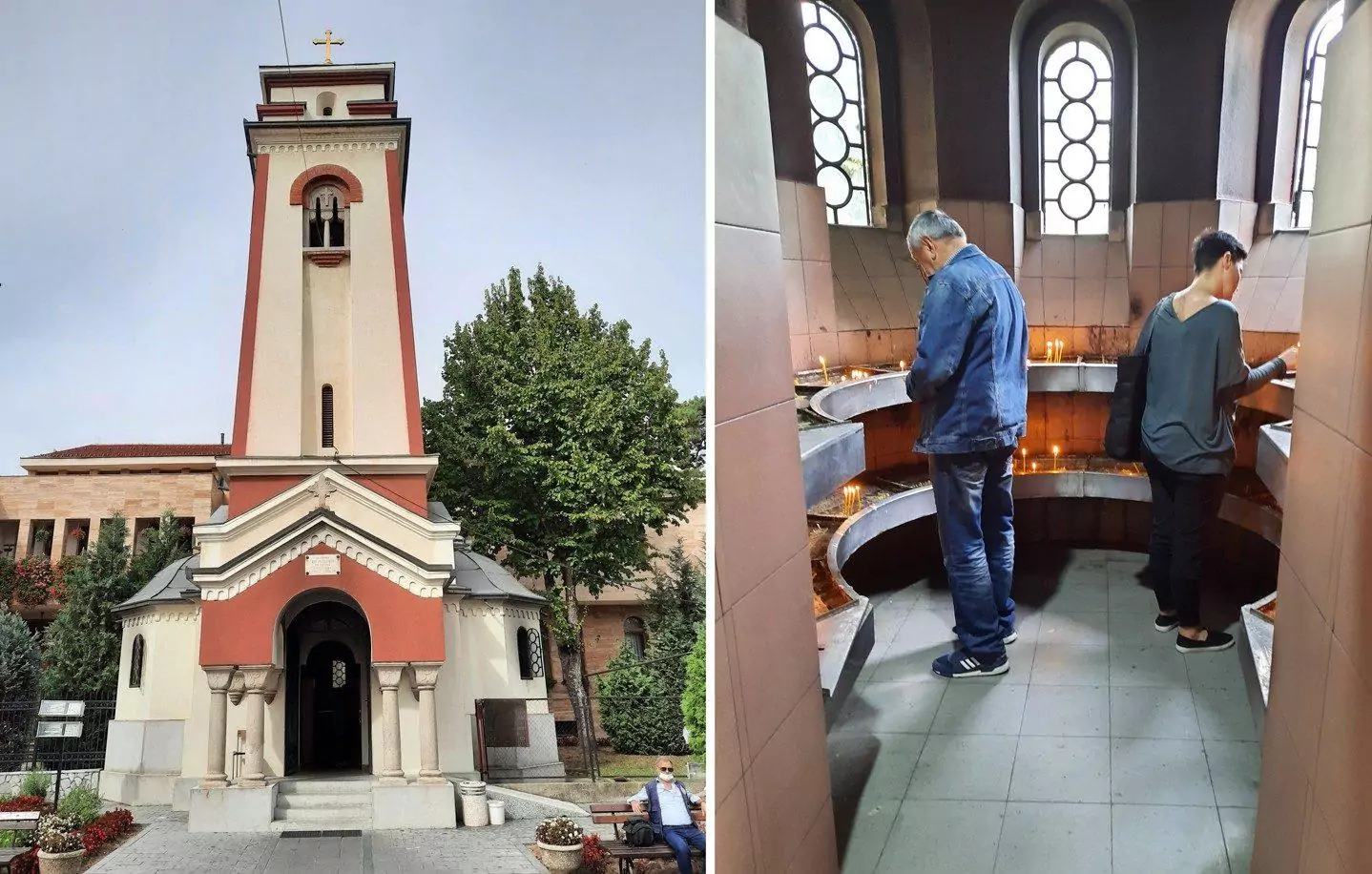
photography by: Omri Westmark
Standing in front of the cathedral is the National Bank Building, inspired by 1930’s German architecture. Apparently, the architect use of columns aimed at reflecting the financial strength and stability of this important institution.

photography by: Omri Westmark
Kragujevac has developed a sophisticated coffee culture, evident by the dozens of cafés throughout the city center.
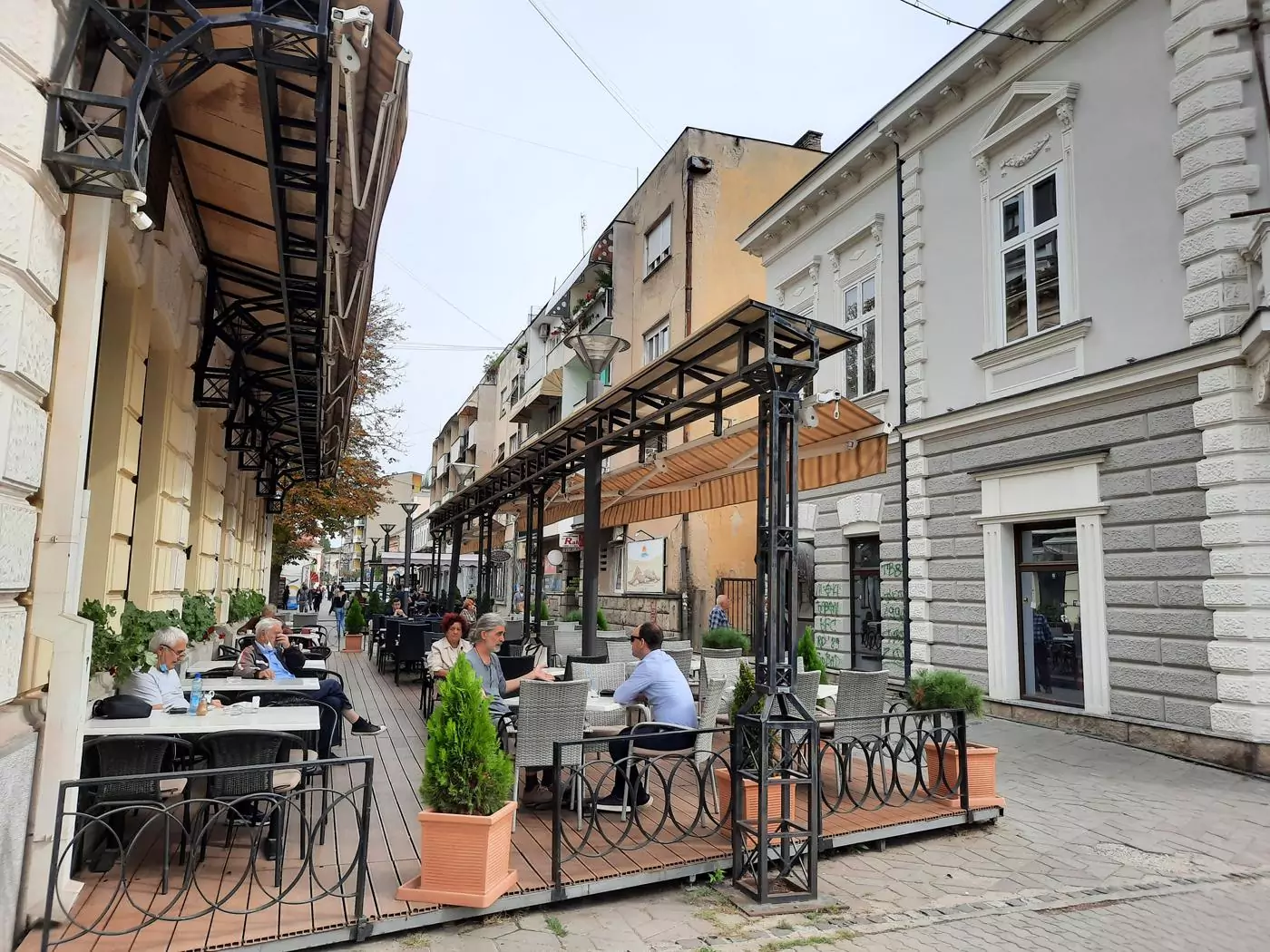
photography by: Omri Westmark
The city center has couple of pedestrian streets dominated by double storey buildings with commercial façade.

photography by: Omri Westmark
All across Serbia pop-corn booths are a prevalent sight, selling ridiculously cheap bags packed with freshly made and hot pop-corn.
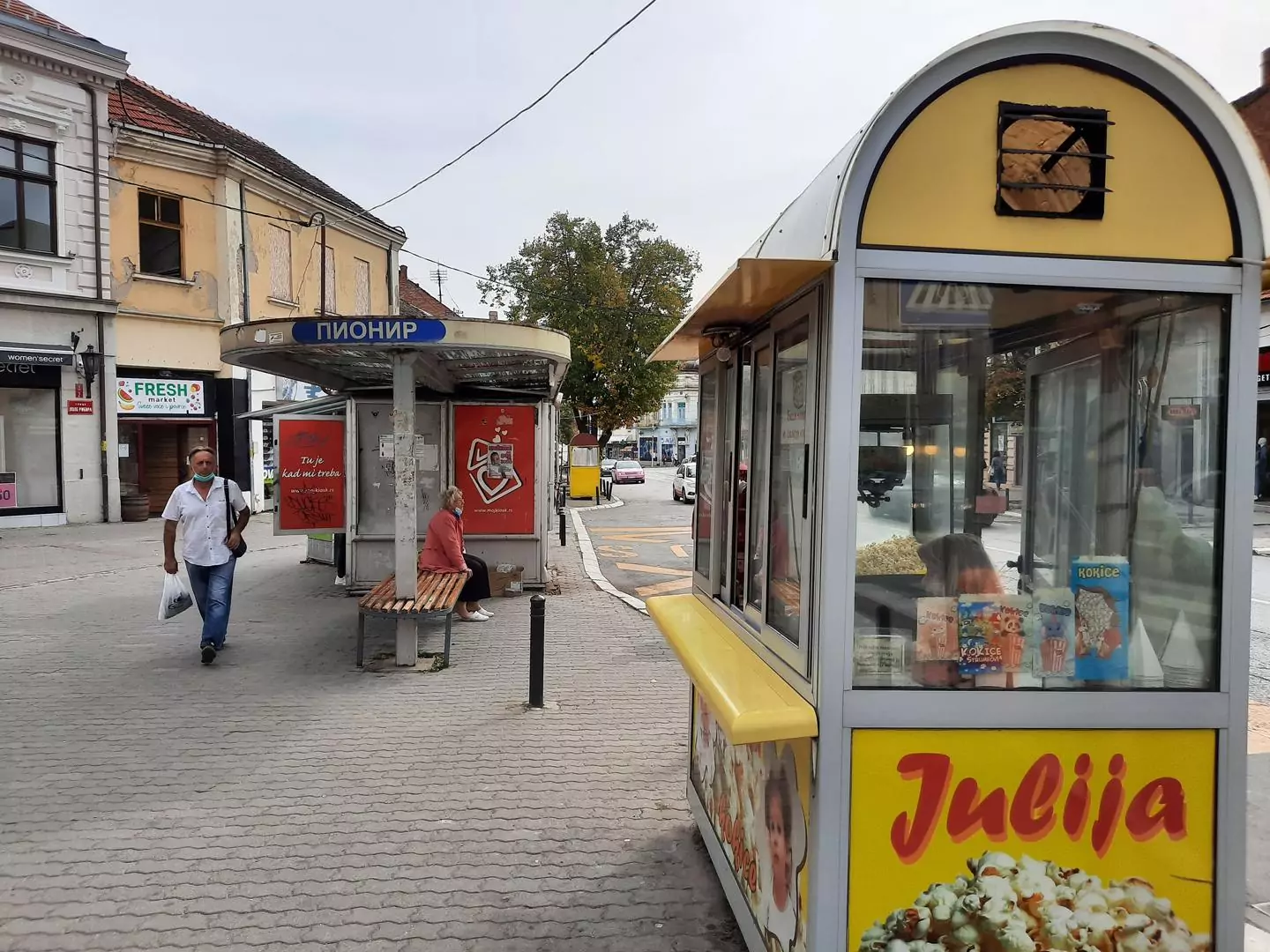
photography by: Omri Westmark
The busy intersection of Kralja Aleksandra and the 27th of March streets on the backdrop of one of Kragujevac’s most iconic buildings.

photography by: Omri Westmark
Another pop-corn booth in Kragujevac’s main pedestrian street, Kralja Petra I.
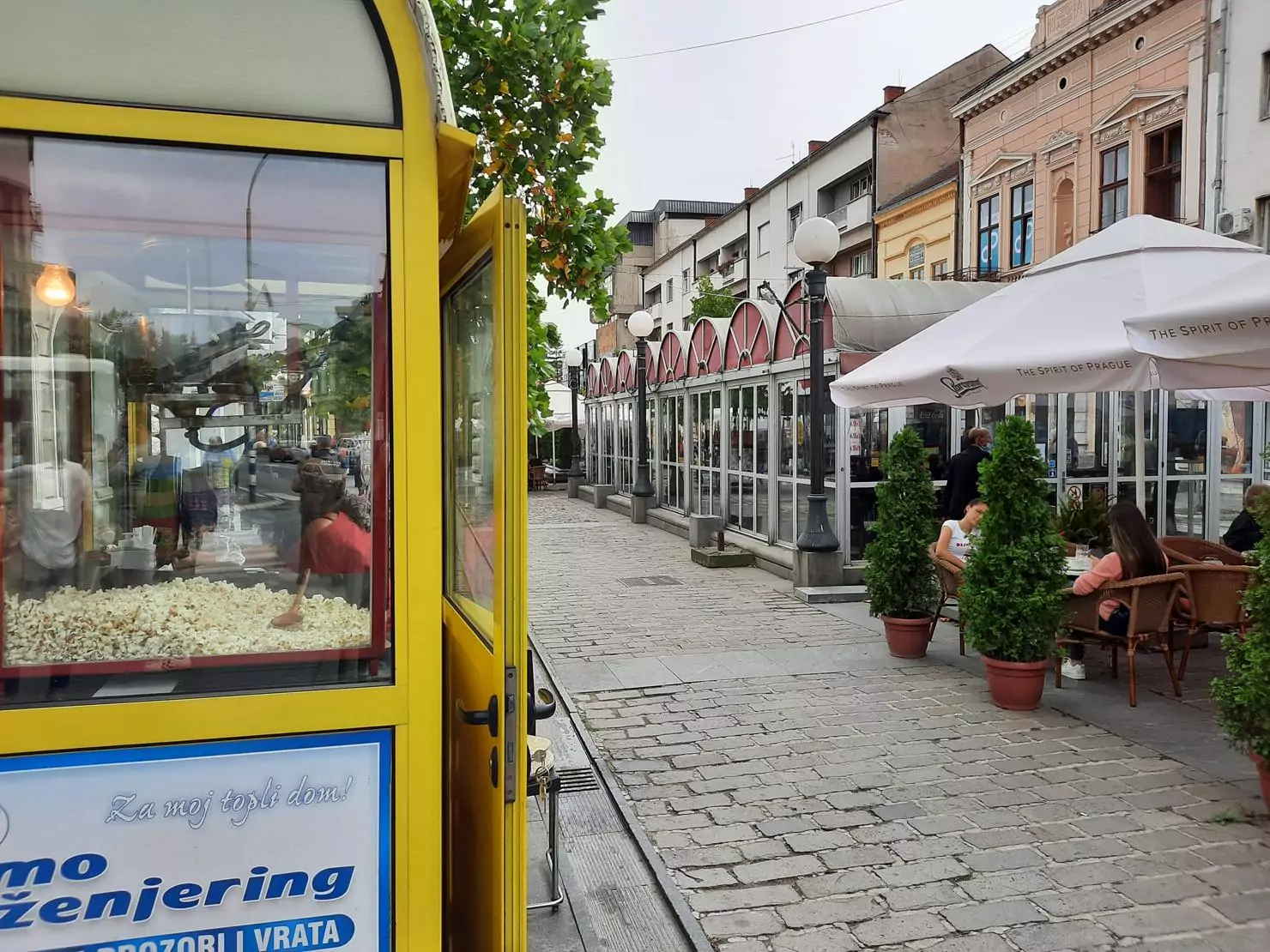
photography by: Omri Westmark
The northern side of Lole Ribara Pedestrian Street is one of the most vibrant parts all over the city, chocked full of seats serving clients of the many cafés and bars around.
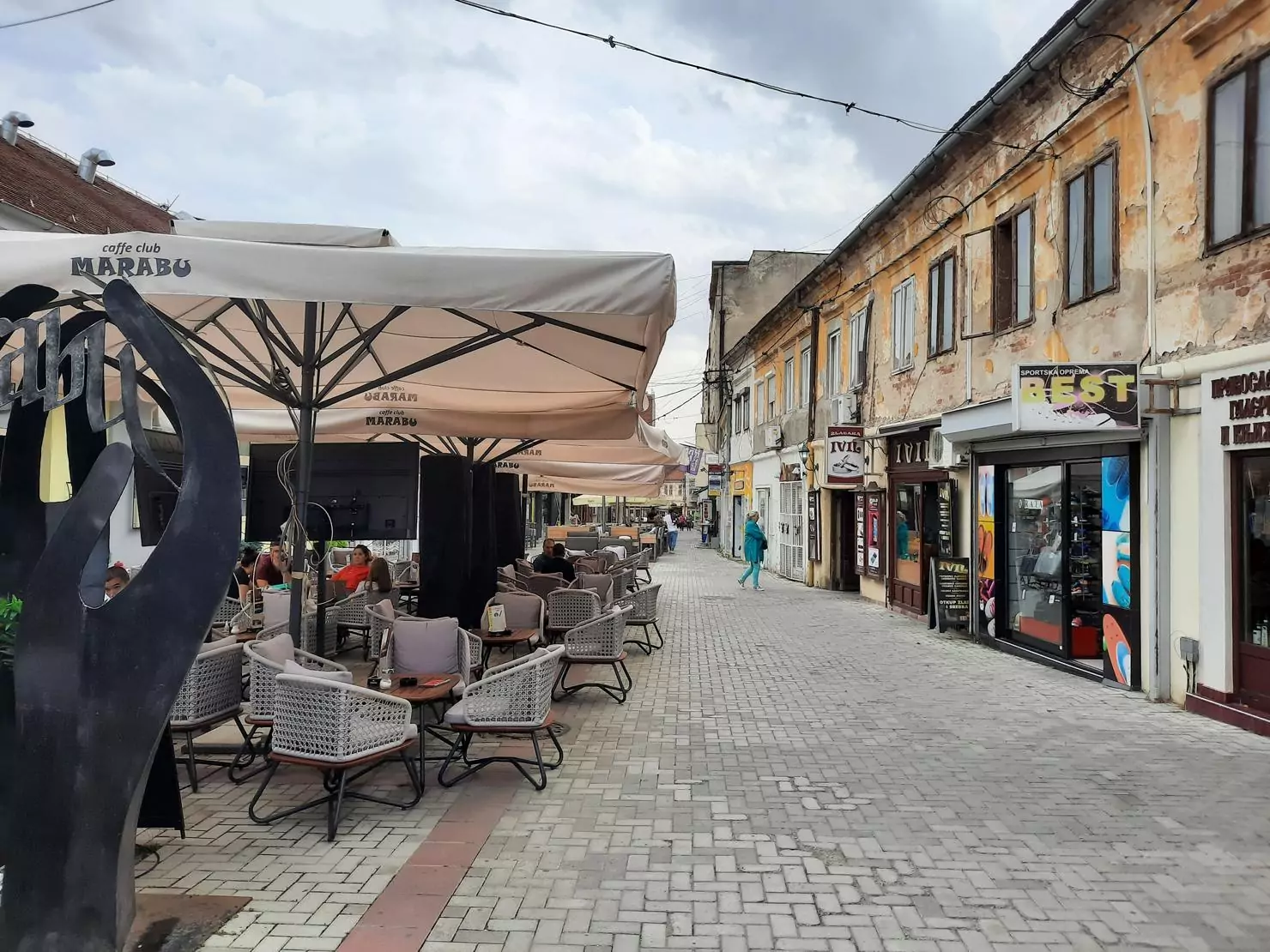
photography by: Omri Westmark
On the contrary, its southern side is somewhat grim, affected by the economic hardships of the Covid-19 pandemic.

photography by: Omri Westmark
Kralja Petra I pedestrian street with its lively cafés is also home to Cosmos shopping mall (on the right), attracting coffee drinkers and shoppers alike.

photography by: Omri Westmark
The public space between the Cosmos shopping mall and the beautifully renovated “Moscow” building is elegantly utilized for hexagonal concrete benches centered around a small patch of flowers.
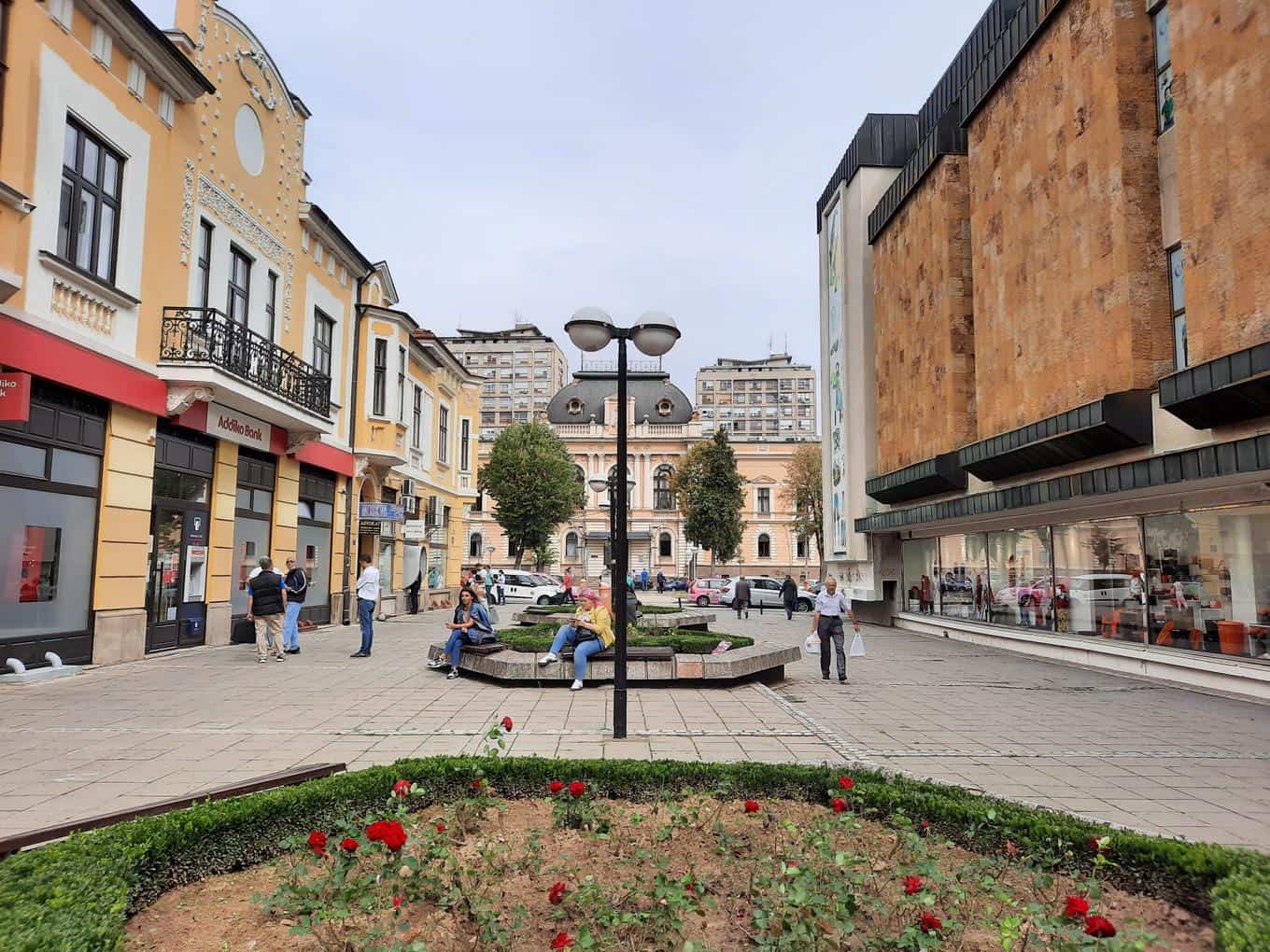
photography by: Omri Westmark
Adjacent to the old city center, Raffles City shopping mall and the surrounding buildings function as an alternative modern-style center, contrasting the traditional architecture with brutalist aesthetics.
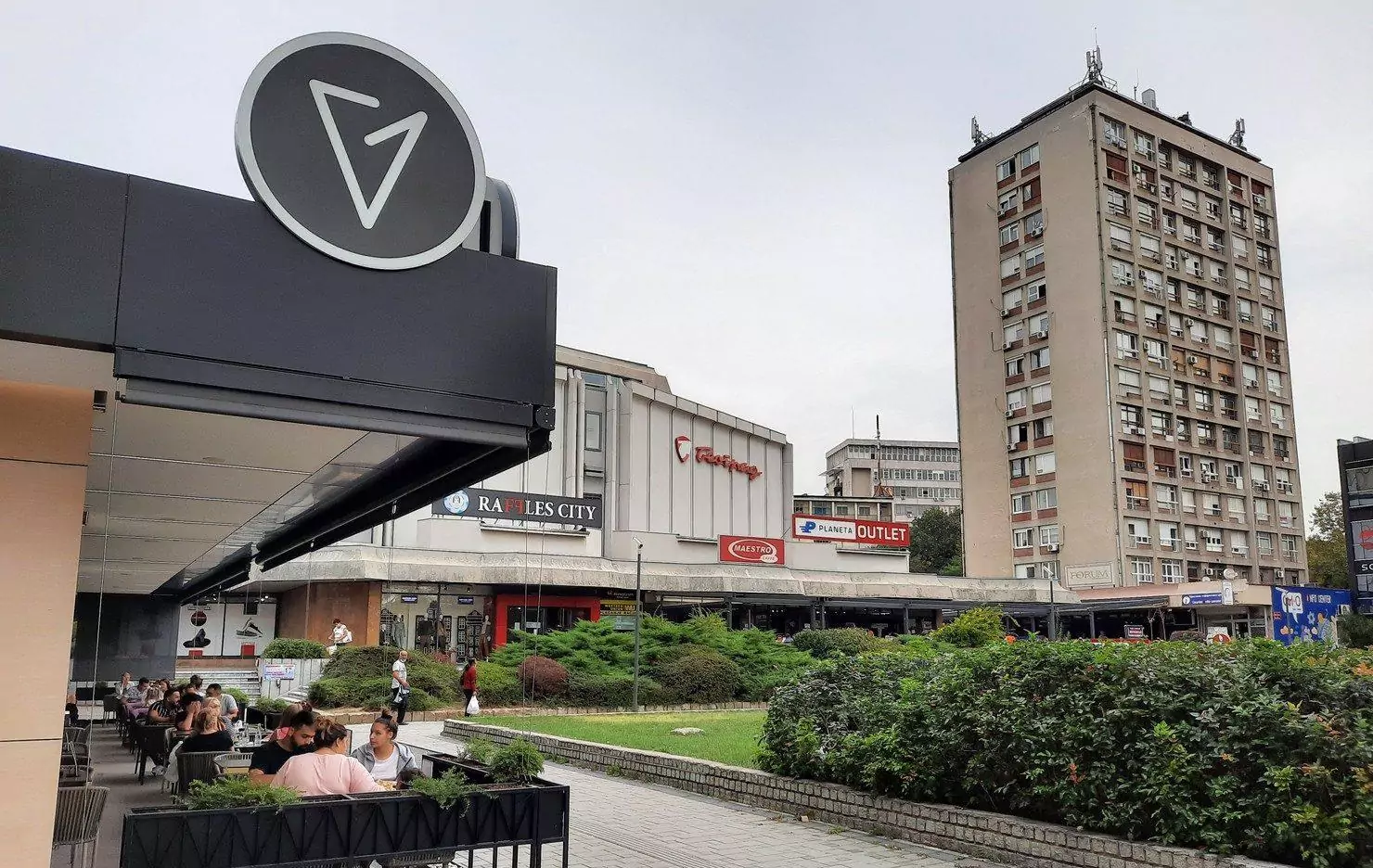
photography by: Omri Westmark
The area around raffles city features wide-open lawns and squares, while outdoor staircase and ramps are built with exposed concrete.
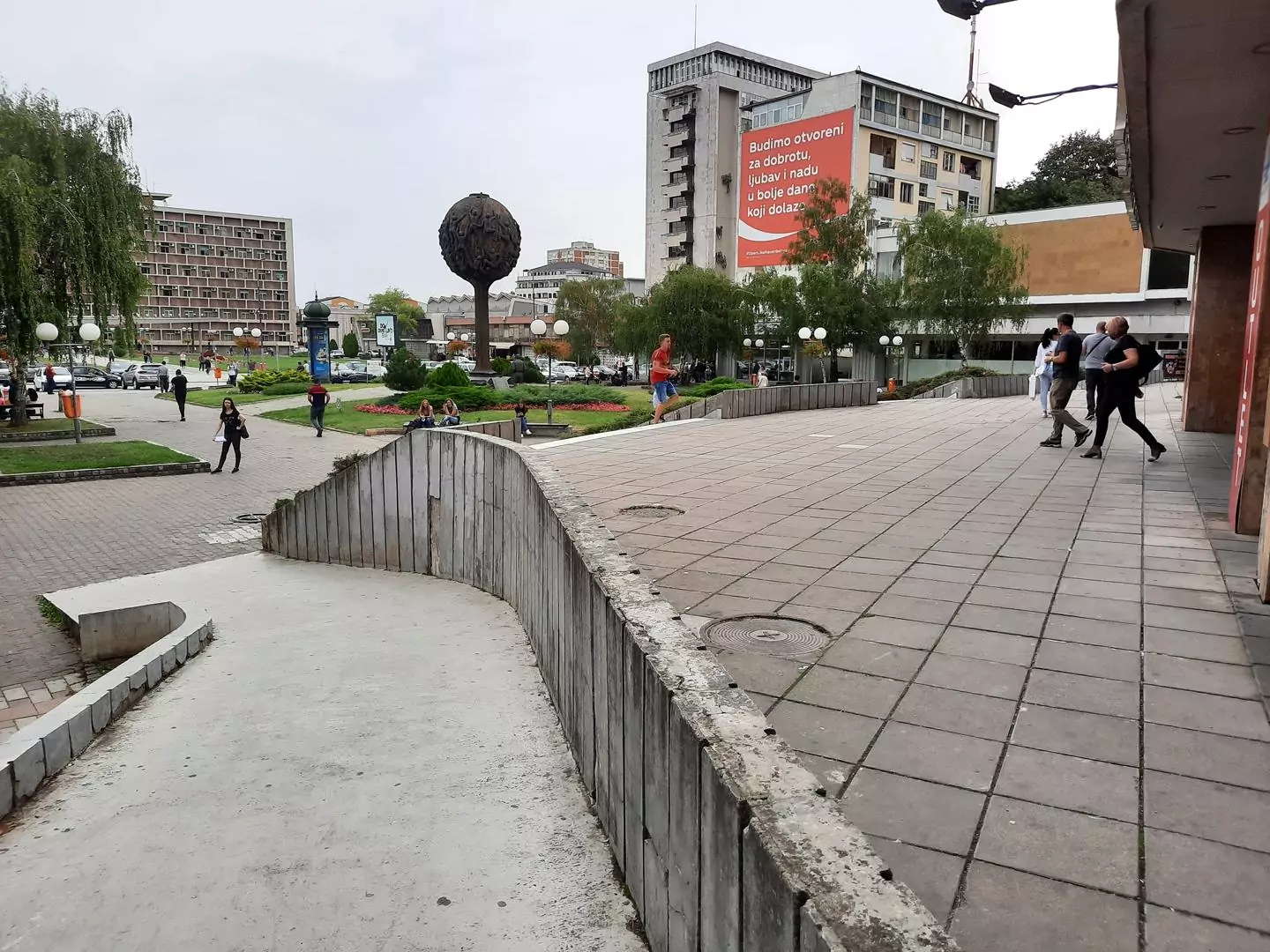
photography by: Omri Westmark
The main façade of Raffles City correlates with its surrounding very well, reflected not only by the building’s modernist design, but also by its open commercial ground level, interacting with passersby rather than being opaque and empty like a typical shopping mall.

photography by: Omri Westmark
Erected in 2007 in memory of Kragujevac’s civilian casualties during the 1990’s wars, the 9.5 meter tall monument of “Uspenje” stands out as a quaint piece of art.
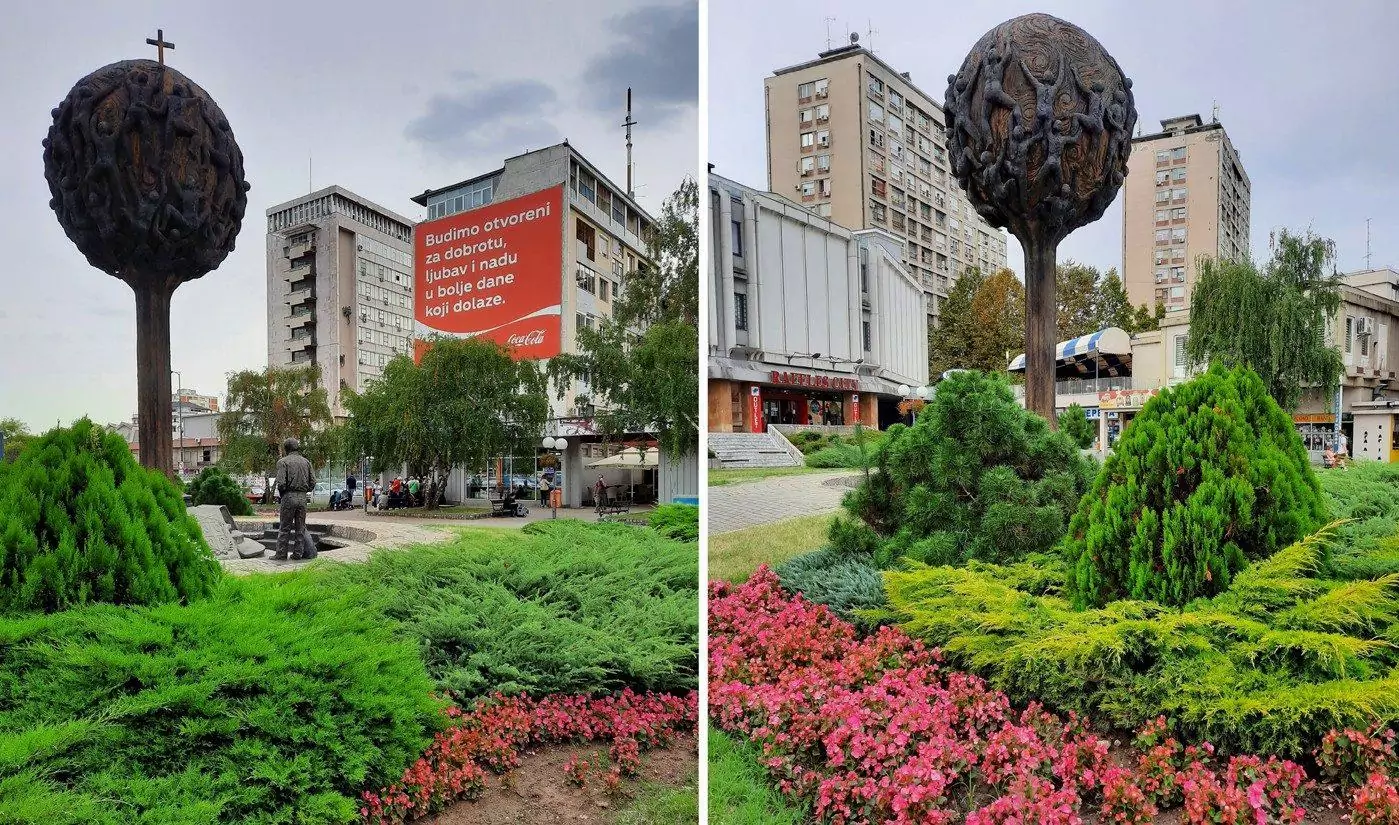
photography by: Omri Westmark
Another example of brutalist landscape architecture, providing city dwellers with octagonal sitting area made of exposed concrete.
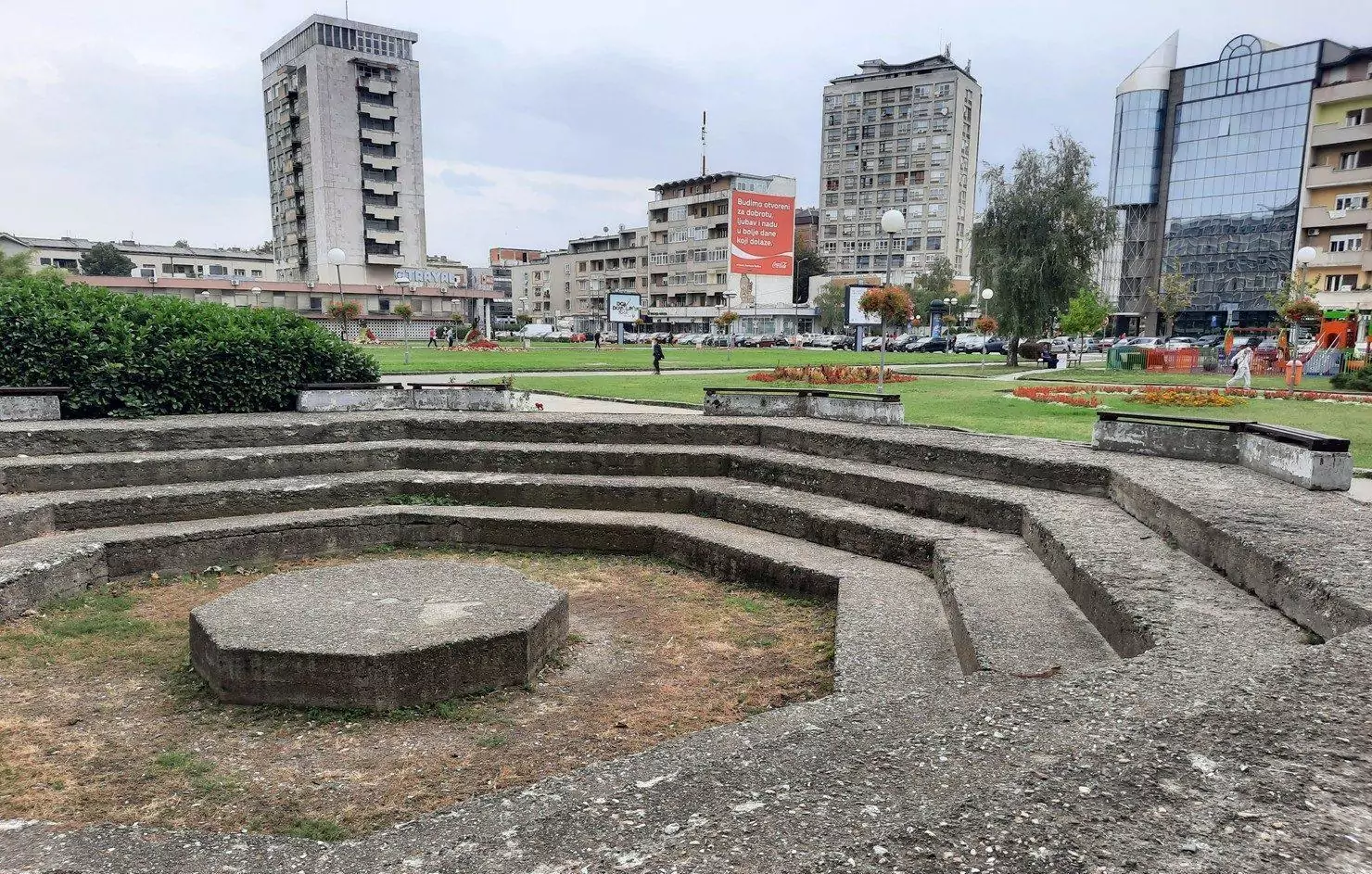
photography by: Omri Westmark
Kragujevac’s national library simplistic design is as far away from contemporary vanity projects of grand-scale libraries as it can possibly get, nonetheless its anachronistic look is charming and playful.
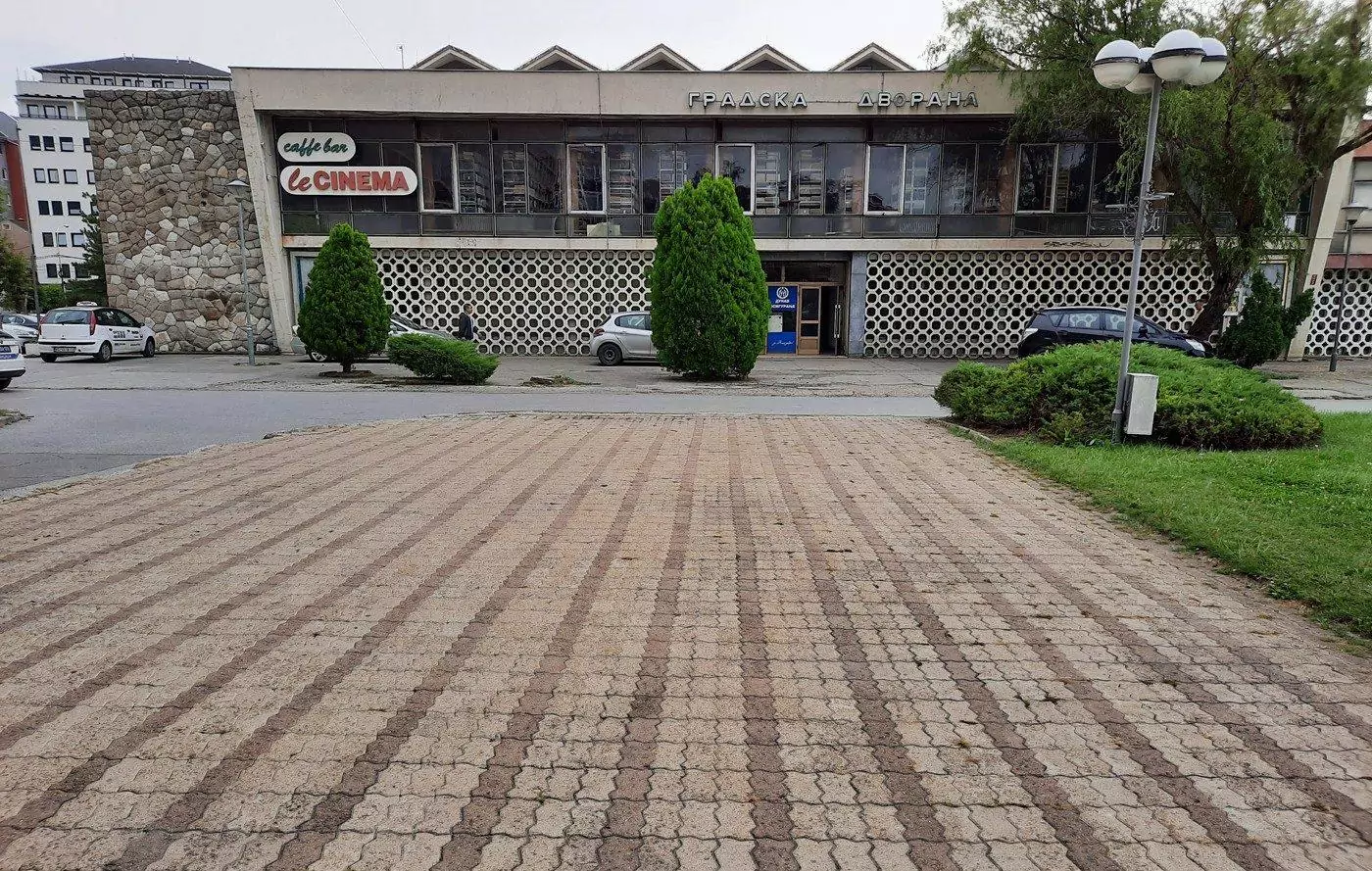
photography by: Omri Westmark
Kragujevac city-hall might seem like a dull socialist style building, yet the closer you get to, you start noticing the intricate details and orthogonal ornaments on its façade.

photography by: Omri Westmark
The city hall is surrounded by meticulously gardened and well-kept lawns.
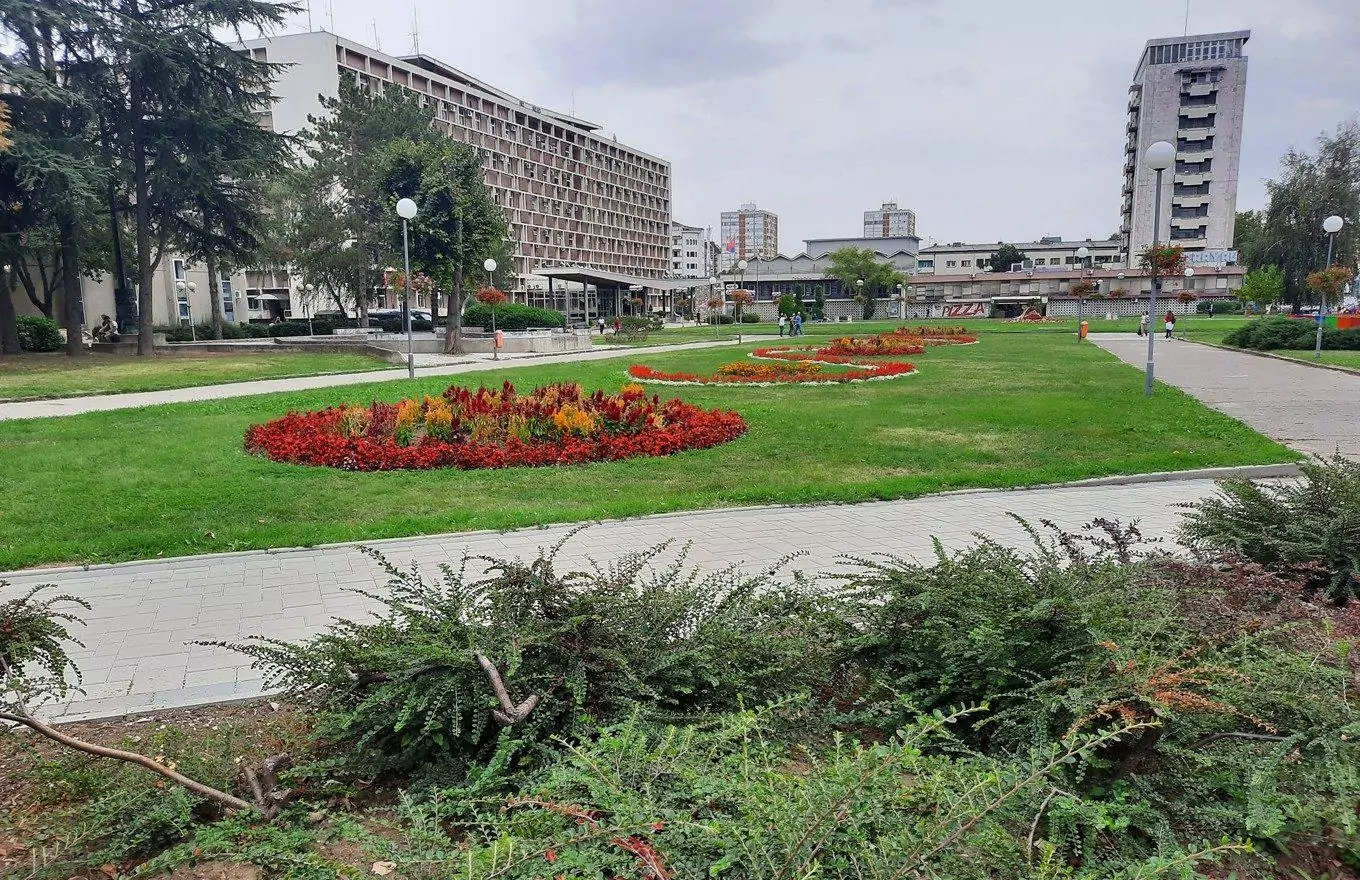
photography by: Omri Westmark
Embellishing the lawns in front of the city hall is a pair of outlandish flower sculptures.
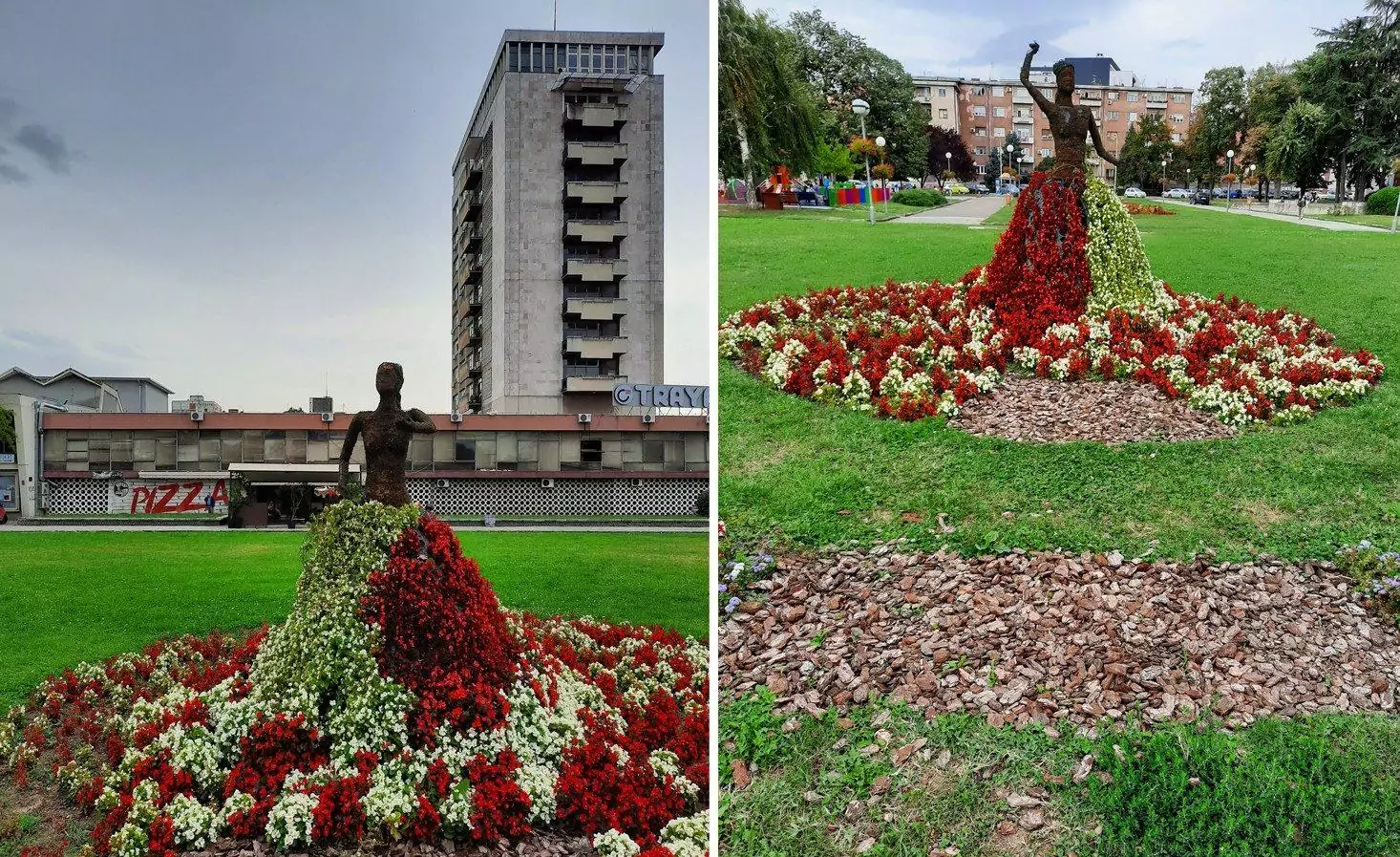
photography by: Omri Westmark
The Narodnog Fronta square is famous for its pleasant vibes and the whimsical fountain spewing water according to different rhythms and intensities.
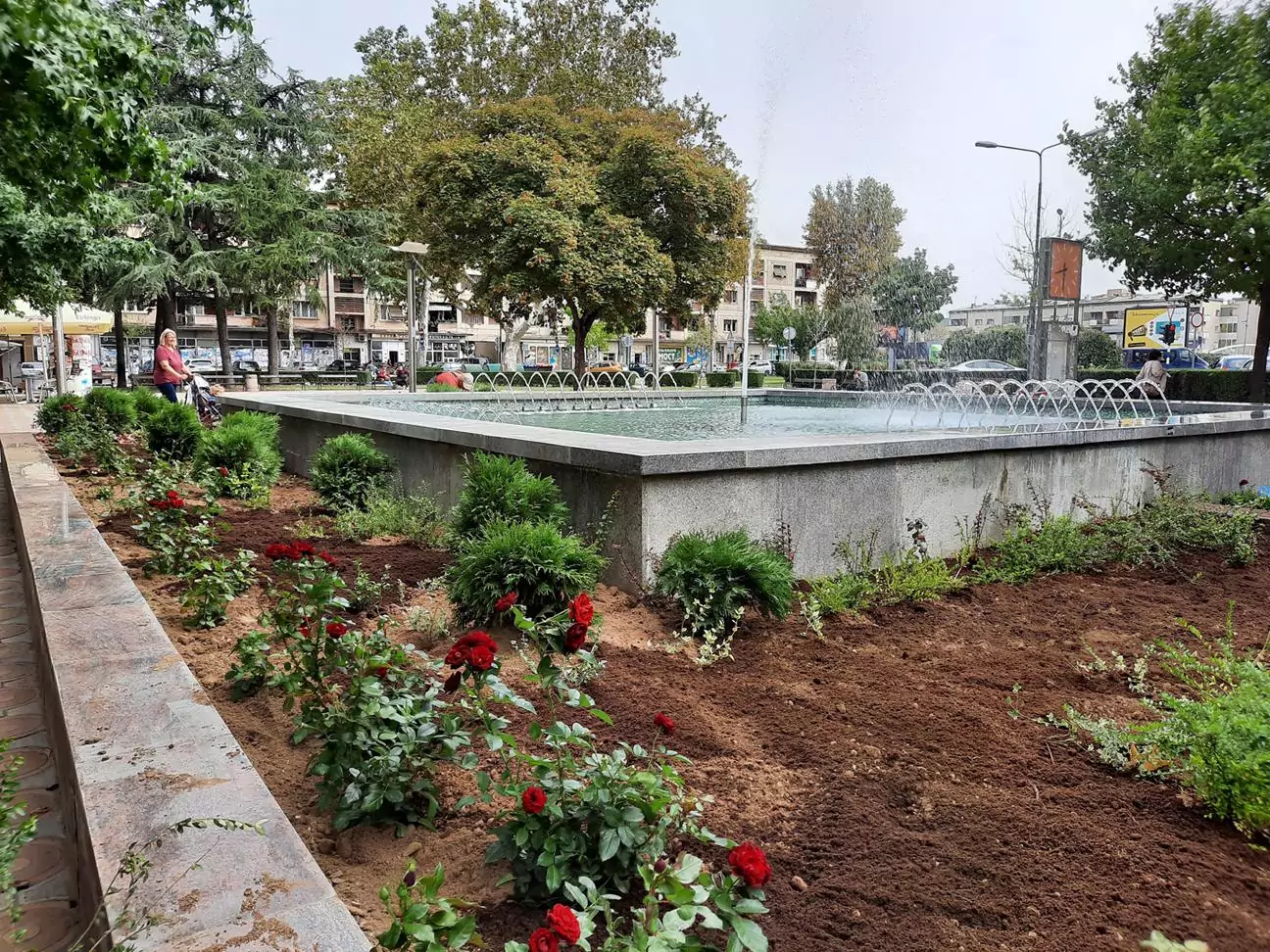
photography by: Omri Westmark
A typical streetscape in Kragujevac, featuring non-generic shops, small scale casinos and local cafés and restaurants, some of which are surprisingly worthy.

photography by: Omri Westmark
Nestled in front of the city old cemetery, Bubanj Lake is just one kilometer away from Kragujevac’s city center. This water reservoir is surrounded by grassy banks and walkways, making it a graceful spot for strolling and relaxing in a sunny day, whereas local hobbyists, old and young alike, find it as a popular site for recreational fishing. A fashionable restaurant on its southern side provides visitors with a cozy place to gaze at the lake while sipping a cup of Serbian style espresso.
A small percentage of its banks are covered by reed grass, making it slightly tricky to explore.
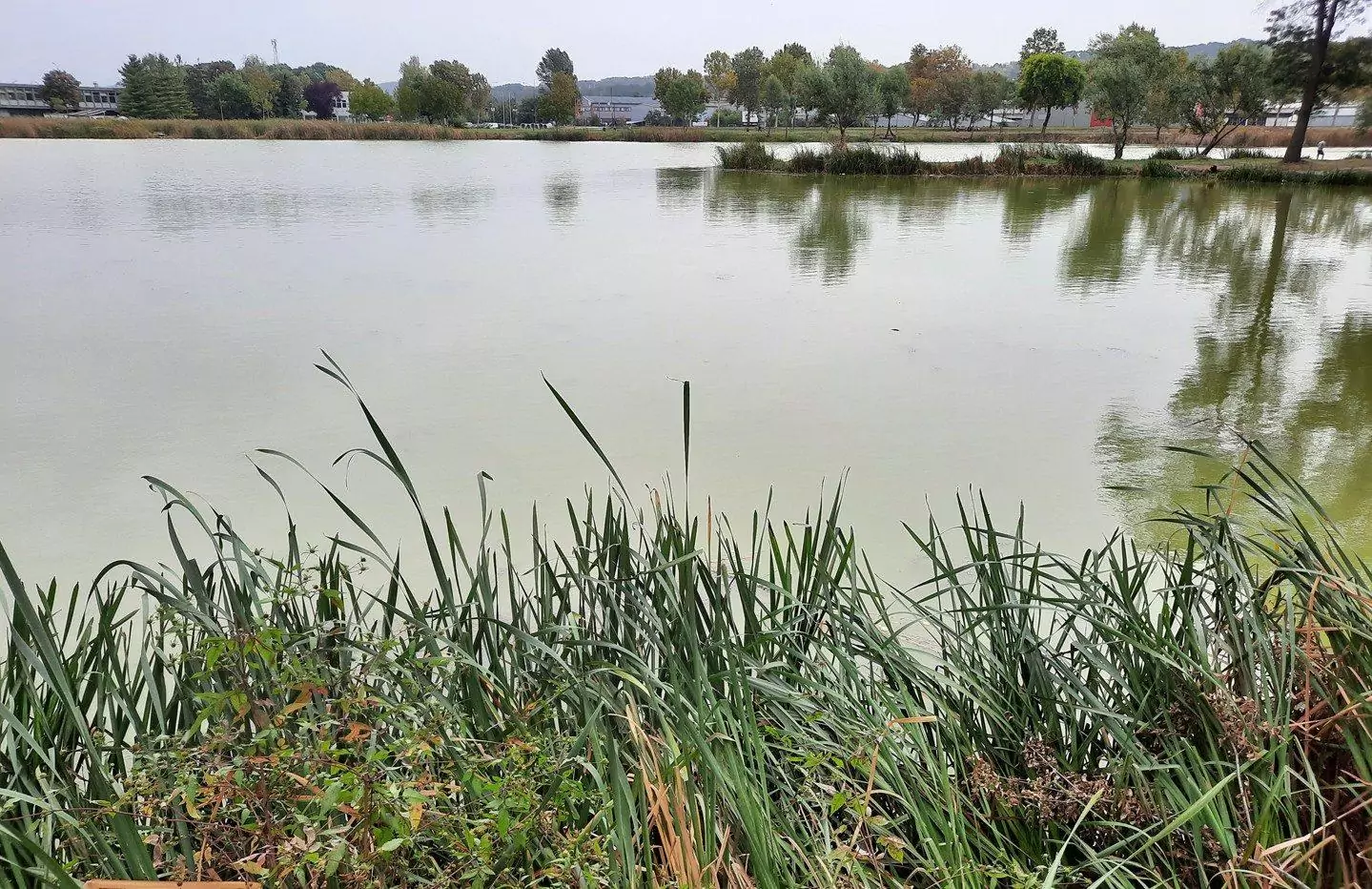
photography by: Omri Westmark
A small peninsular patch of land is serving as a popular spot for fishing.
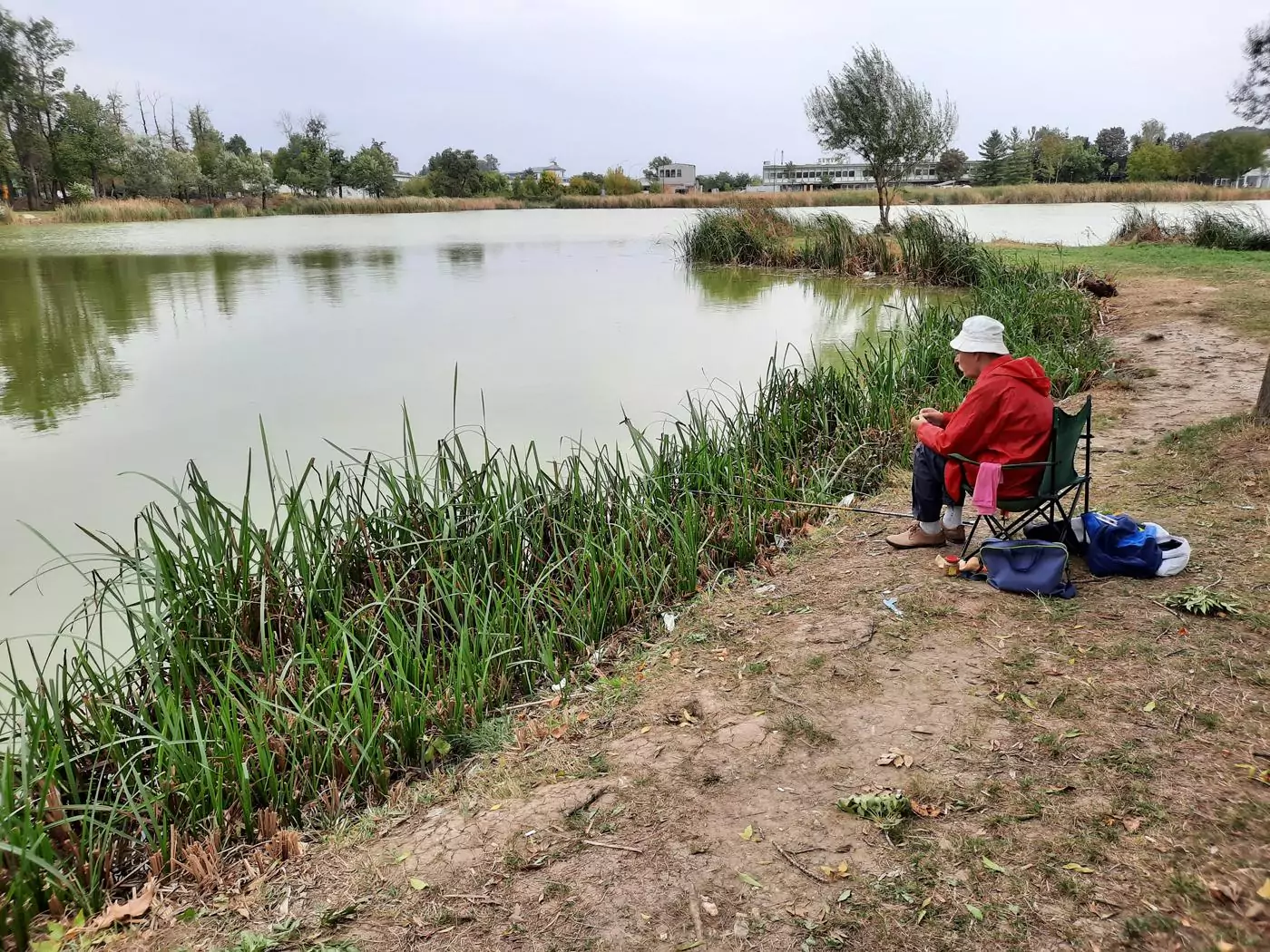
photography by: Omri Westmark
While others find it as a charming place for romantic date.
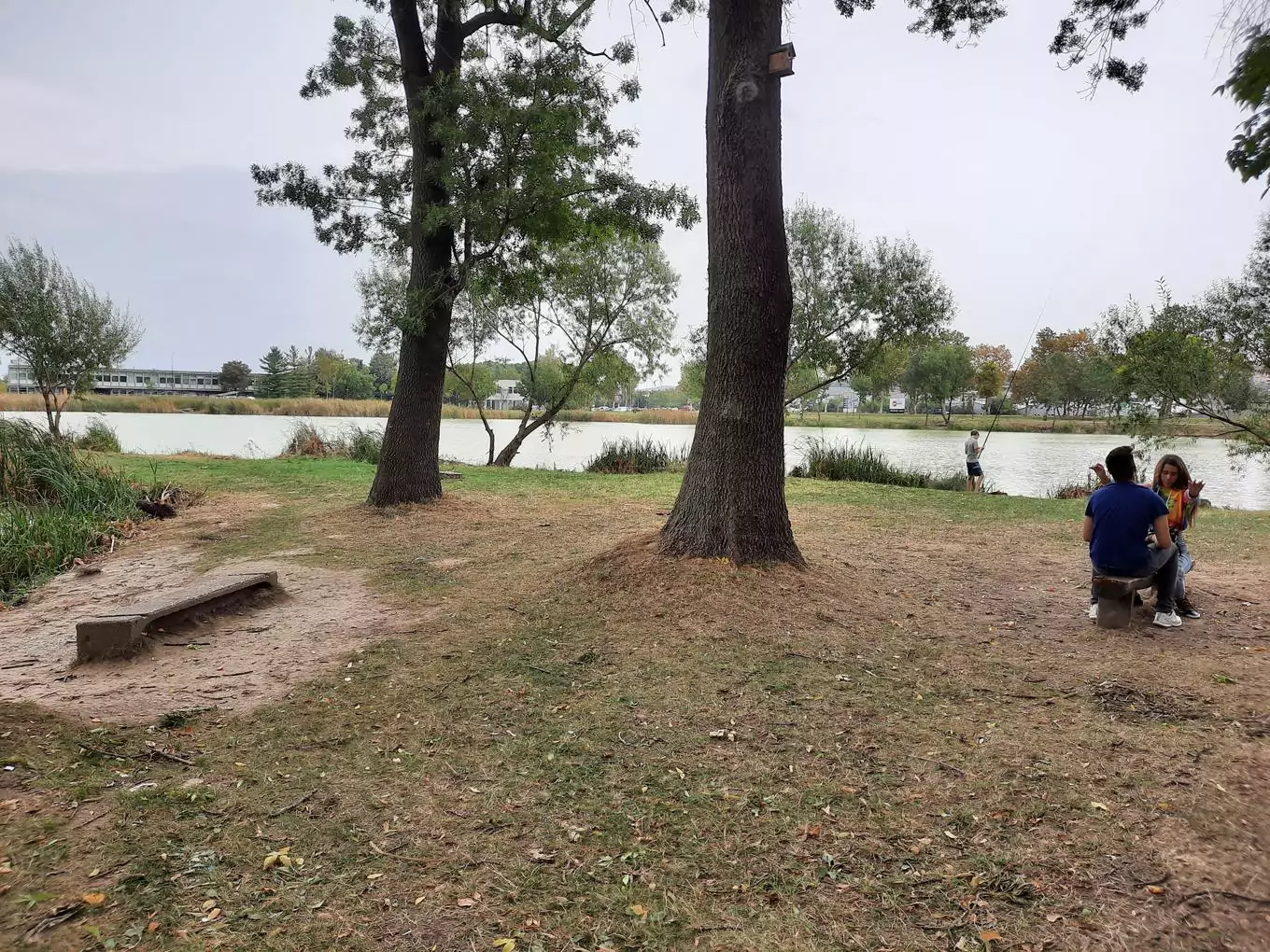
photography by: Omri Westmark
School-children take advantage of their free day, fishing and Instagramming simultaneously.
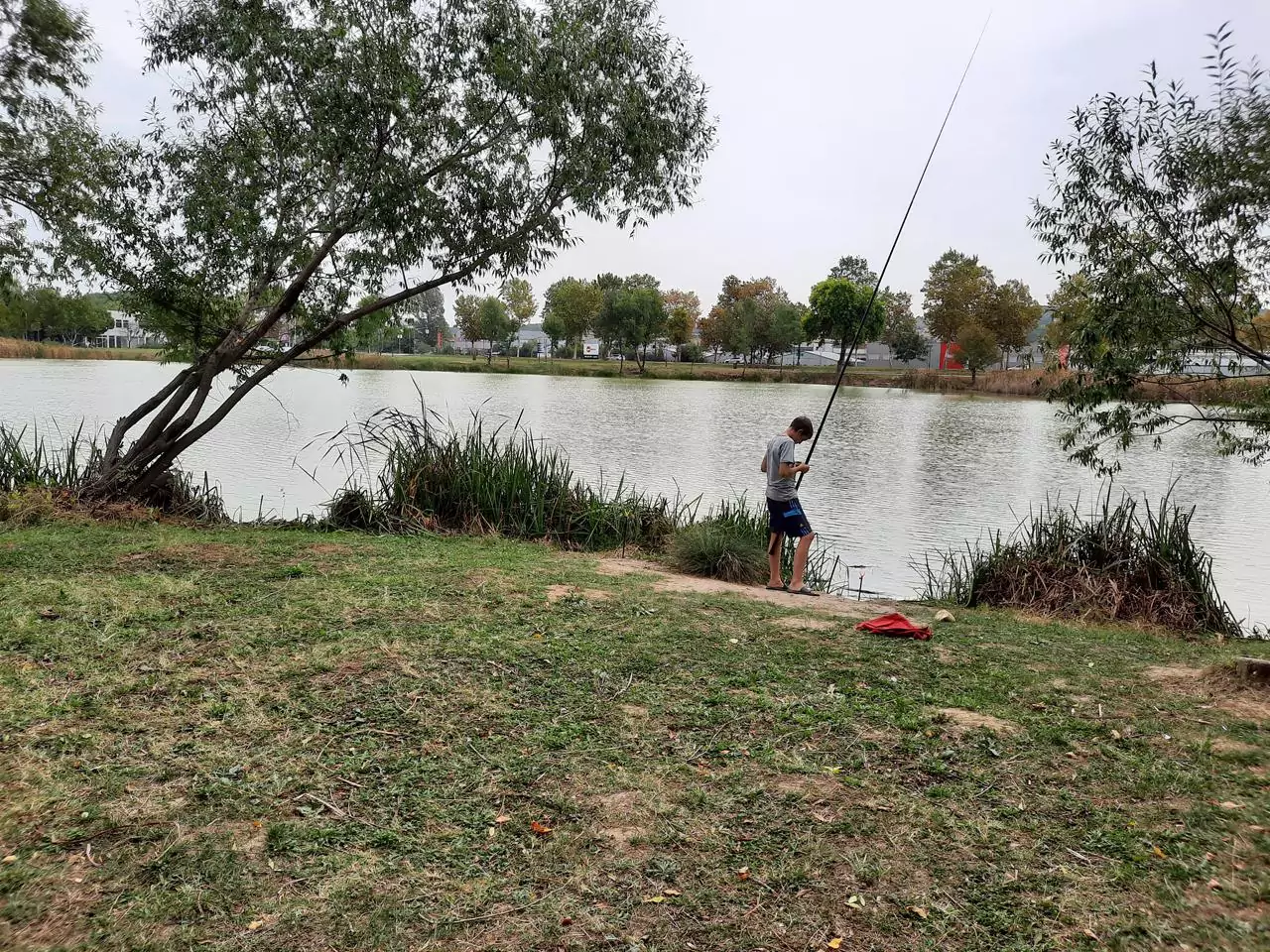
photography by: Omri Westmark
Bubanj Lake’s murky and greenish water on the backdrop of Dvoriste Restaurant, the aforementioned dinning place.
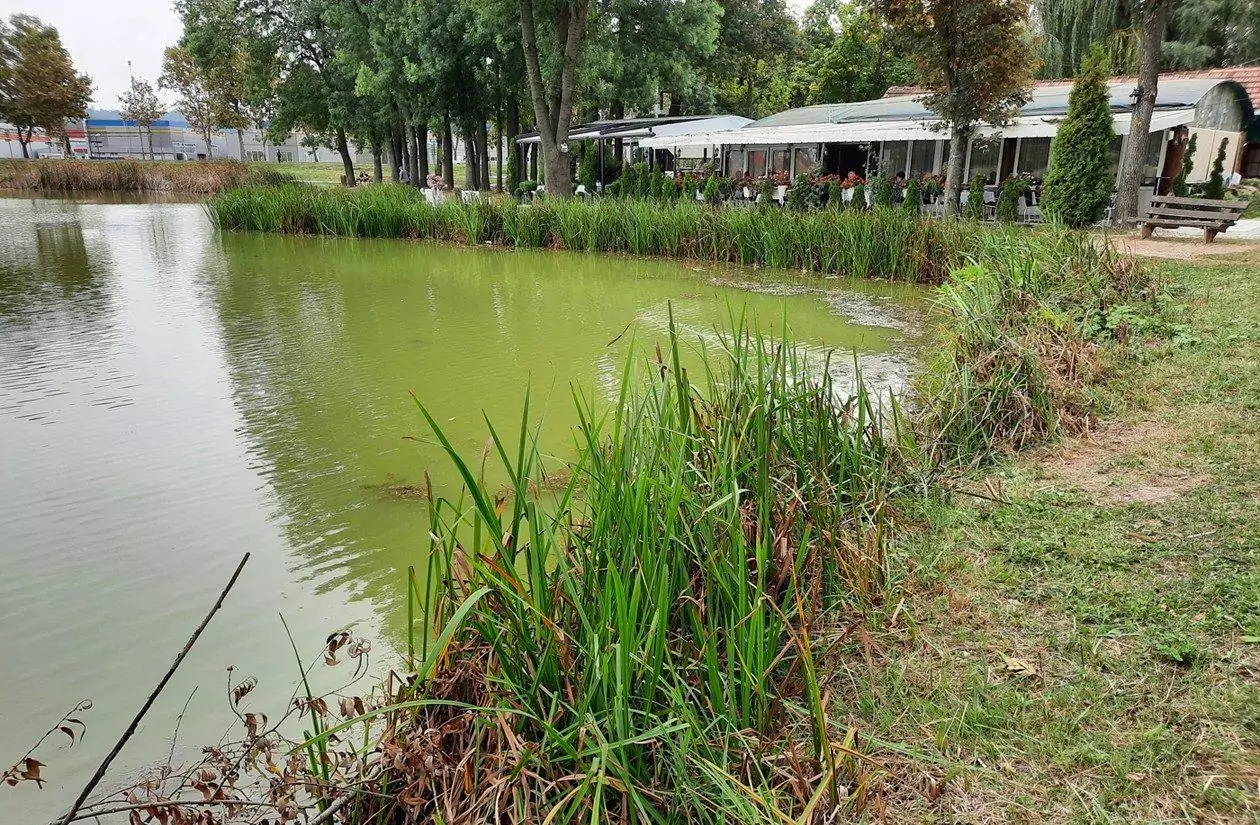
photography by: Omri Westmark
Throughout the lake there are a couple of dilapidated wooden benches.
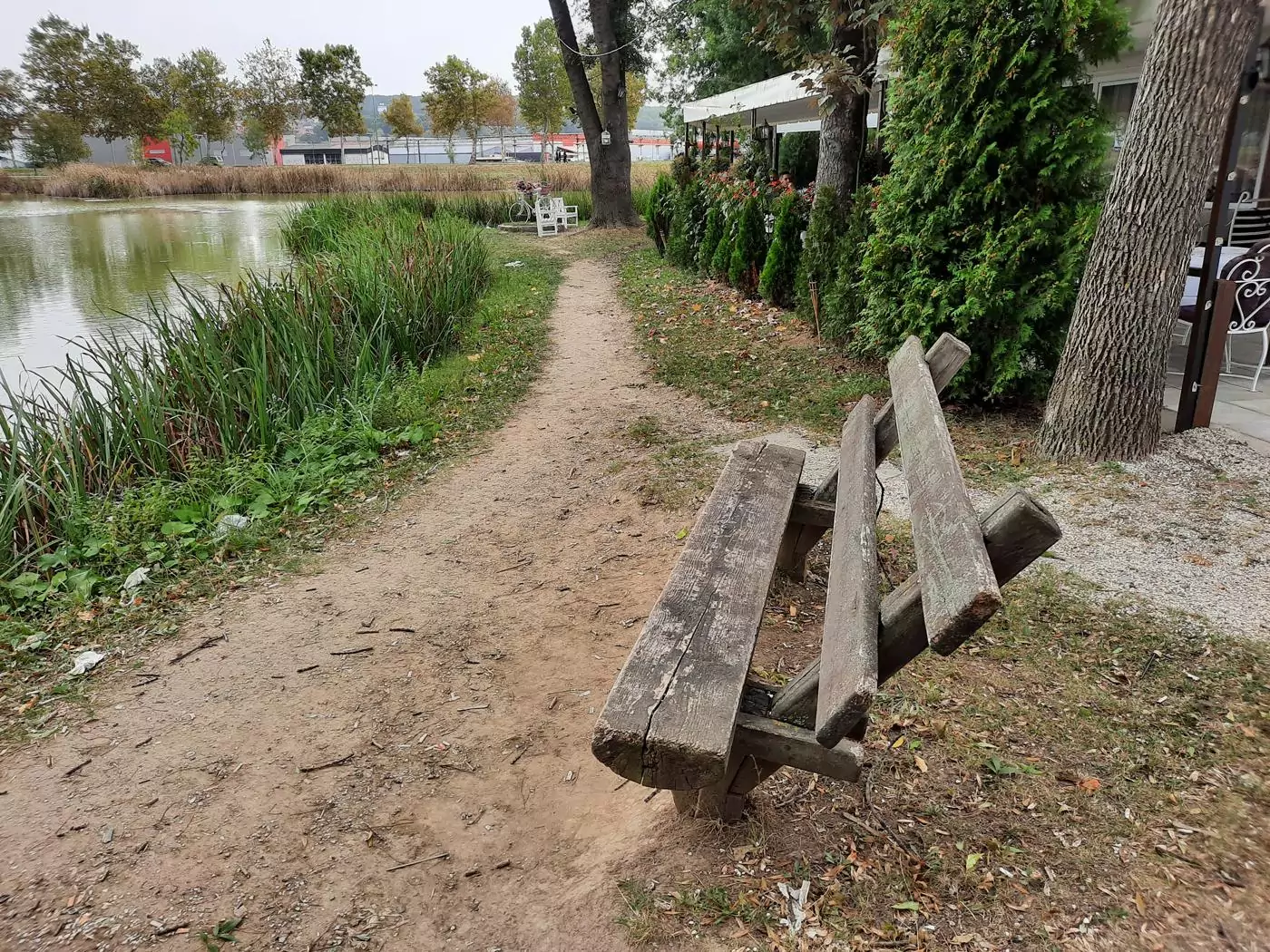
photography by: Omri Westmark
Serbia is home to myriad of memorial parks commemorating its painful past of WW2, one of which is Šumarice Memorial Park, sometimes referred to as October Park, created in memory of the 2,800 Serbs who were murdered by Nazi Soldiers in Kragujevac massacre, taking place on the same site where the park is located.
Even people who aren’t particularly enthusiastic about WW2 tourism would find this green getaway as exceptional and interesting, as the stone sculptured memorials are a sight to awe at whether you are familiar of their historic context or not.
The 21st of October Museum serves as gateway to the park itself, while telling the horrific stories of thousands of Kragujevac residents who were infamously massacred by Nazi Germany in the 21st of October 1941, during WW2. The museum itself was architecturally inspired by typical medieval Serbian fortresses.

photography by: Omri Westmark
The interrupted flight monument in memory of the school children and teachers who lost their life in the massacre.
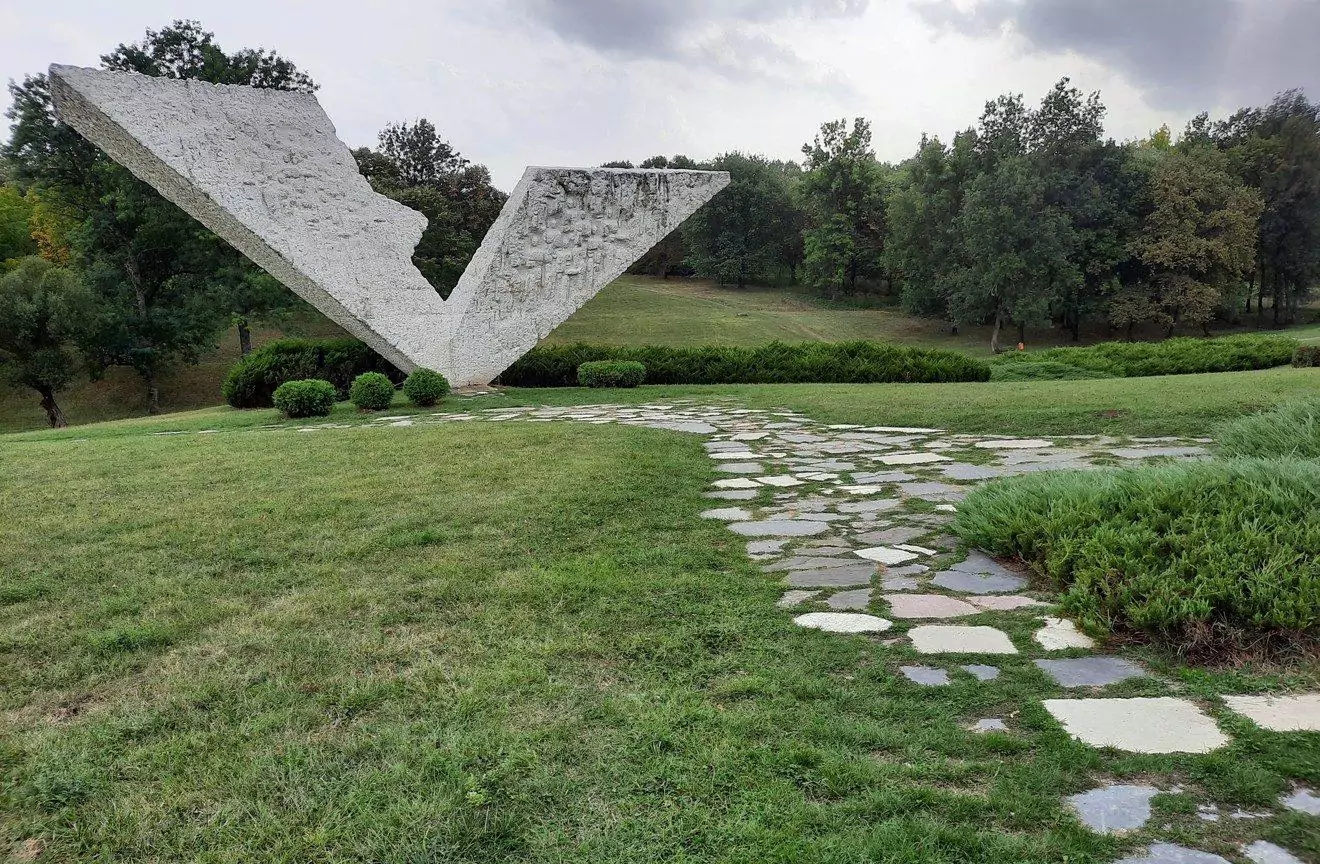
photography by: Omri Westmark
The crystal flower sculpture, also known as the Shoe-shiners Monument, made in memory of a 15 years old Romani boy who was executed by the Nazis. The flower intended to represent the child’s life, while it’s being split to half reflects his pre-mature tragic death.
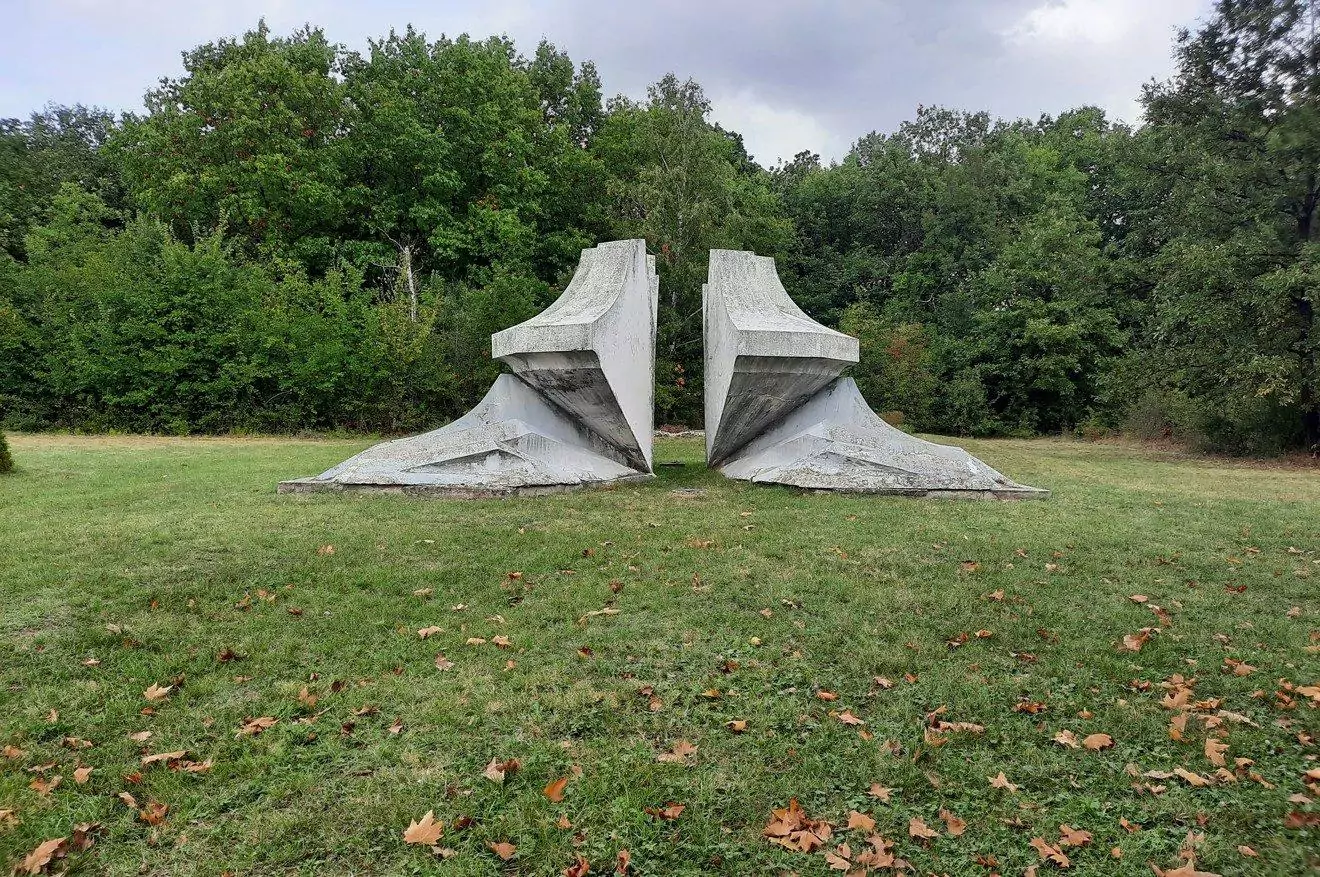
photography by: Omri Westmark
The park itself is traversed by a road, a bicycle lane and a pedestrian sidewalk, surrounded by forest and lawns from both sides.
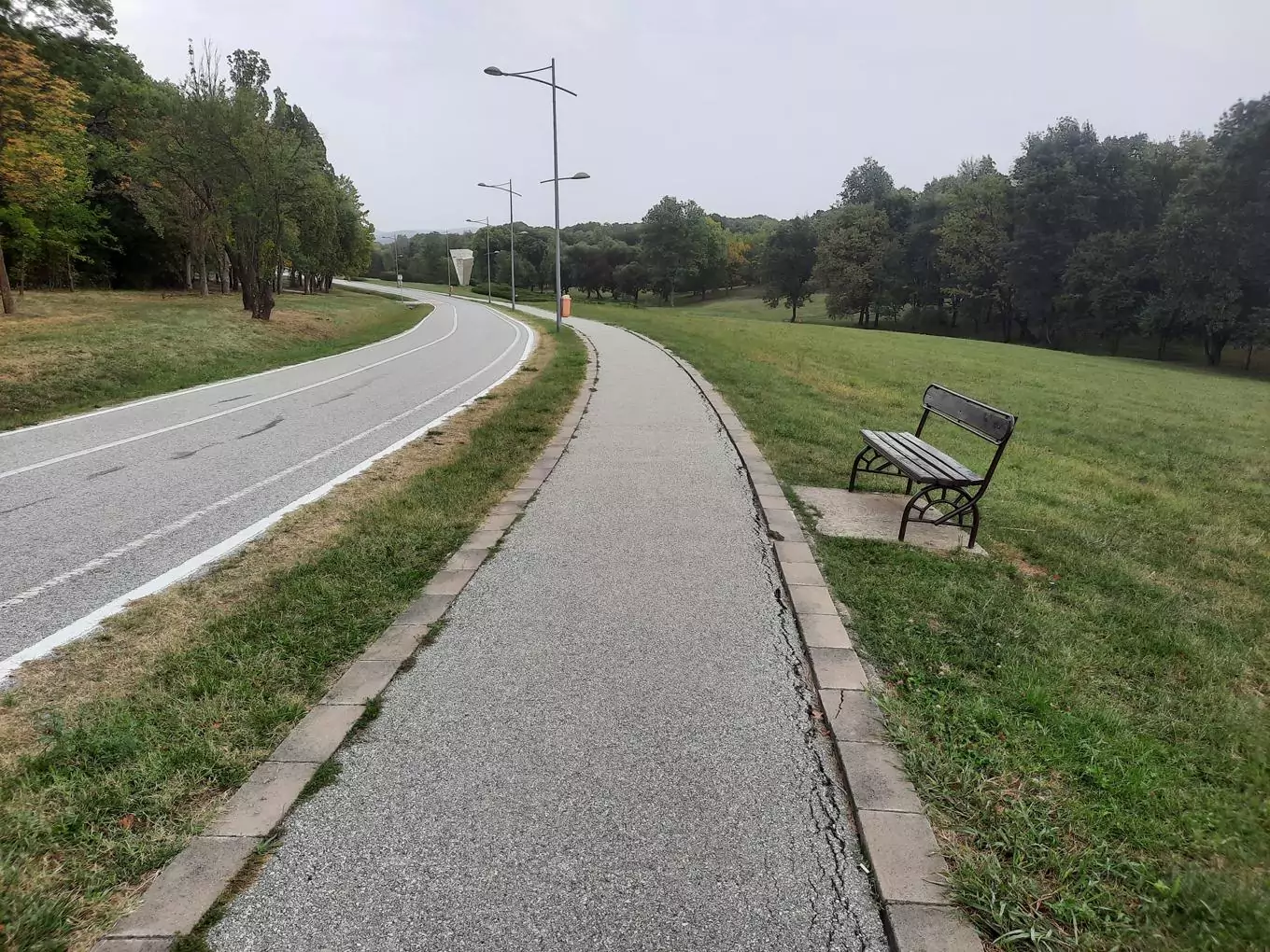
photography by: Omri Westmark
A lion sculpture honoring the soldiers who died in World War I.
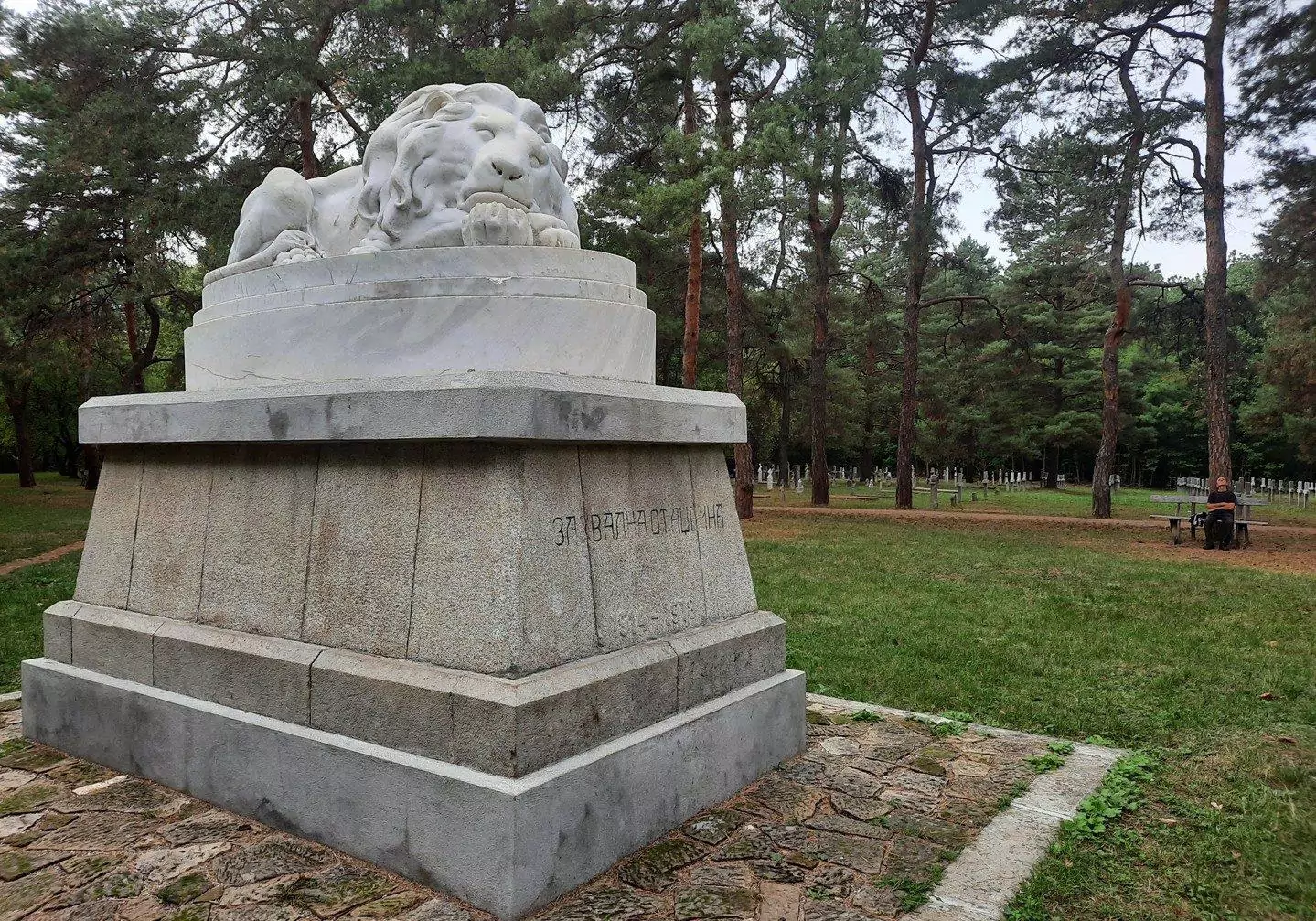
photography by: Omri Westmark
The old military cemetery where soldiers who died in WW1 are buried.

photography by: Omri Westmark
Another statue honoring the fallen soldiers.
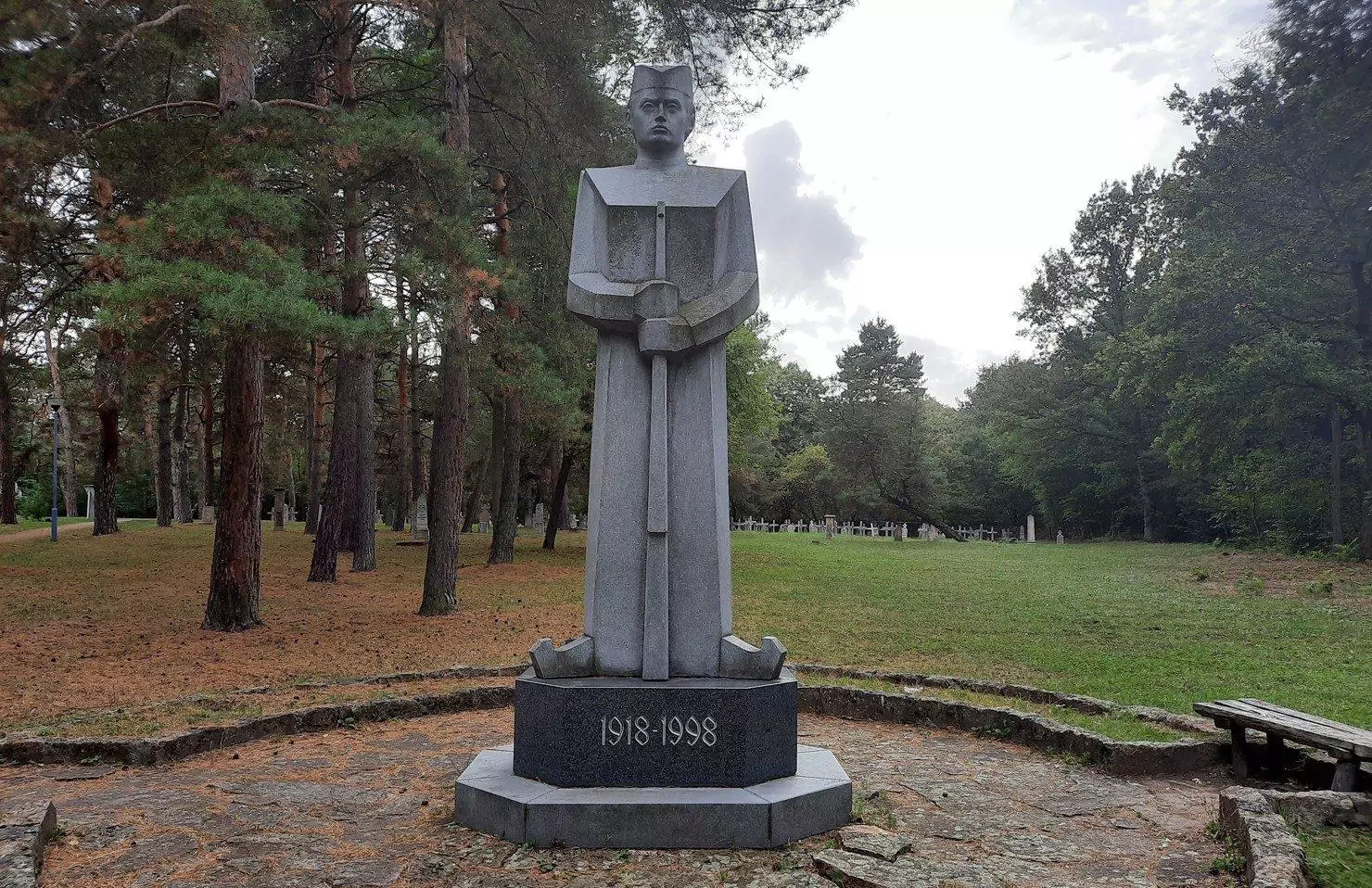
photography by: Omri Westmark
Surrounding the park are open fields with semi marked paths. Enjoyable and walkable, it’s a great opportunity to peacefully stroll and ponder about everything you’ve just experienced in the park.
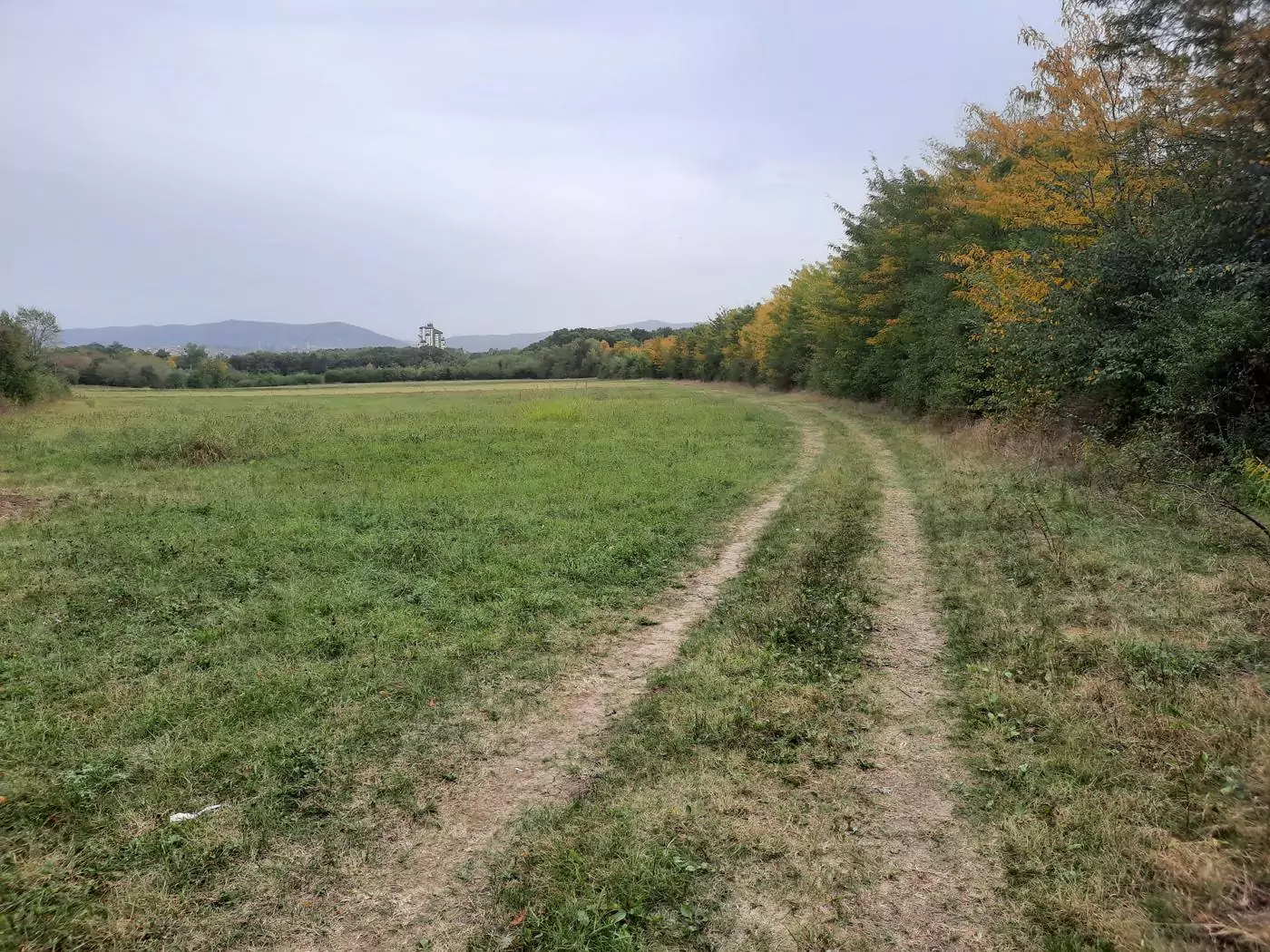
photography by: Omri Westmark
Look for the paved road if you want to reconnect to the park’s paths.
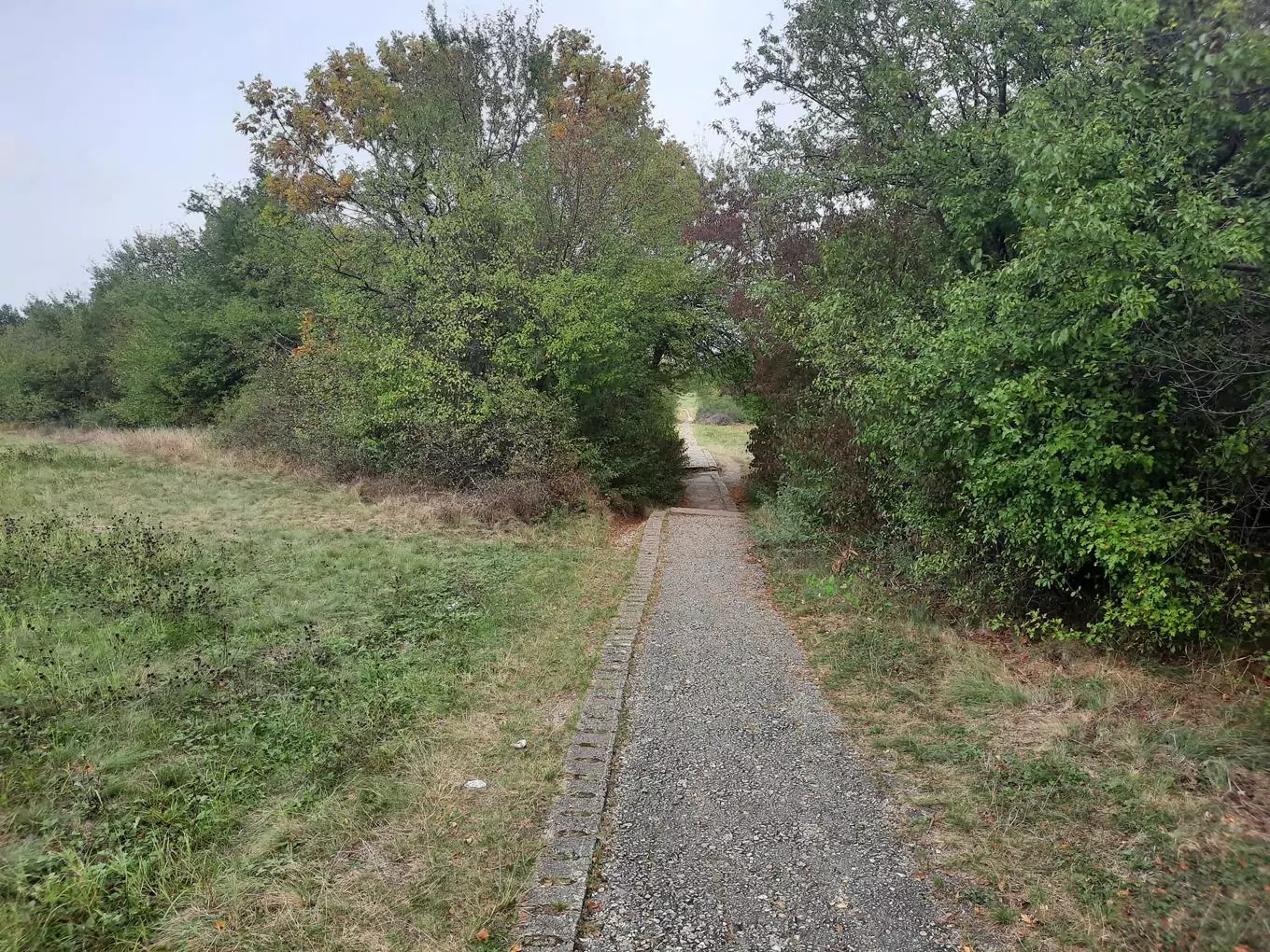
photography by: Omri Westmark
While on my way back to the park, I bumped into this ramshackle village house, admittedly very creative way, albeit inconvenient, of entering home.
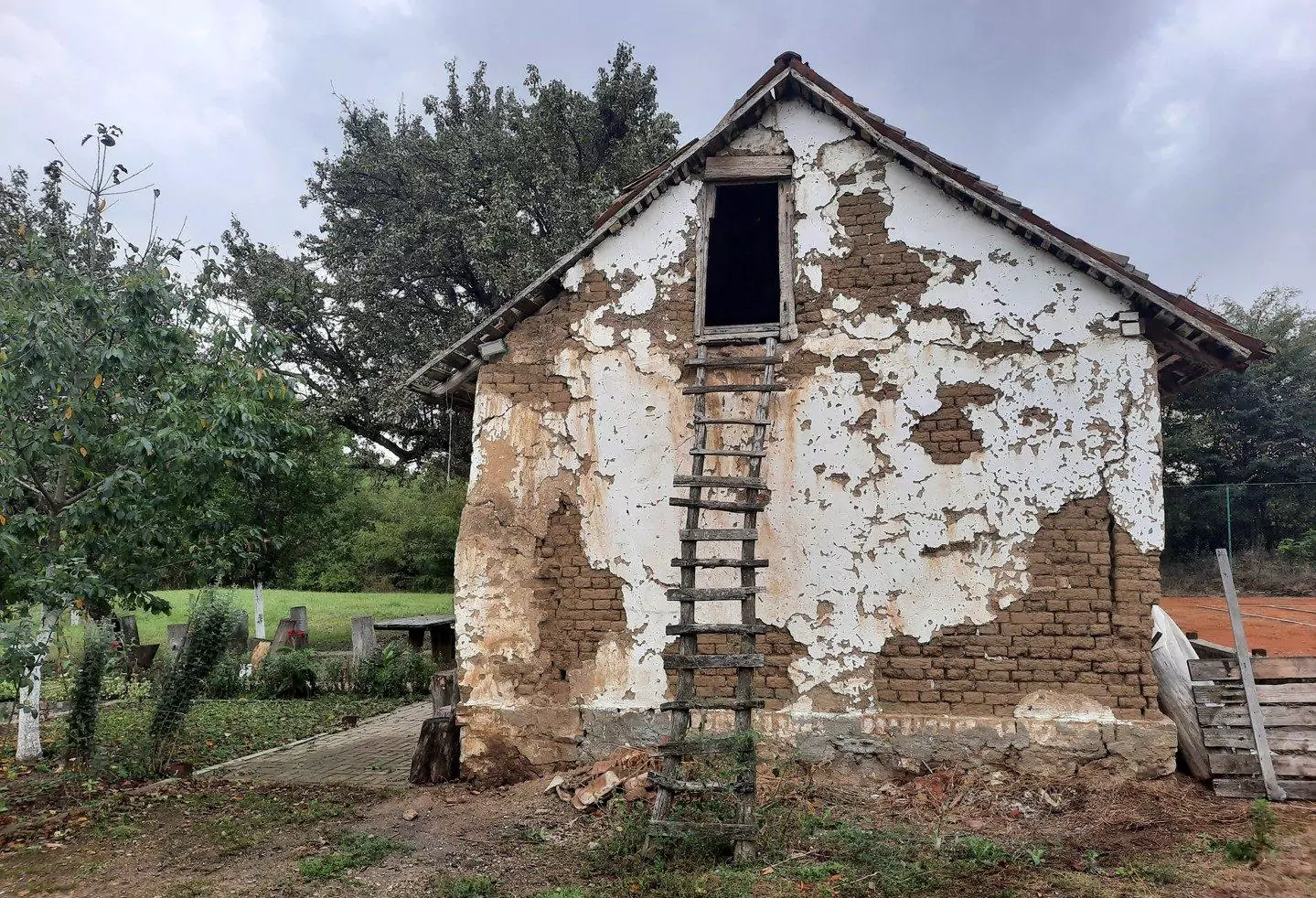
photography by: Omri Westmark